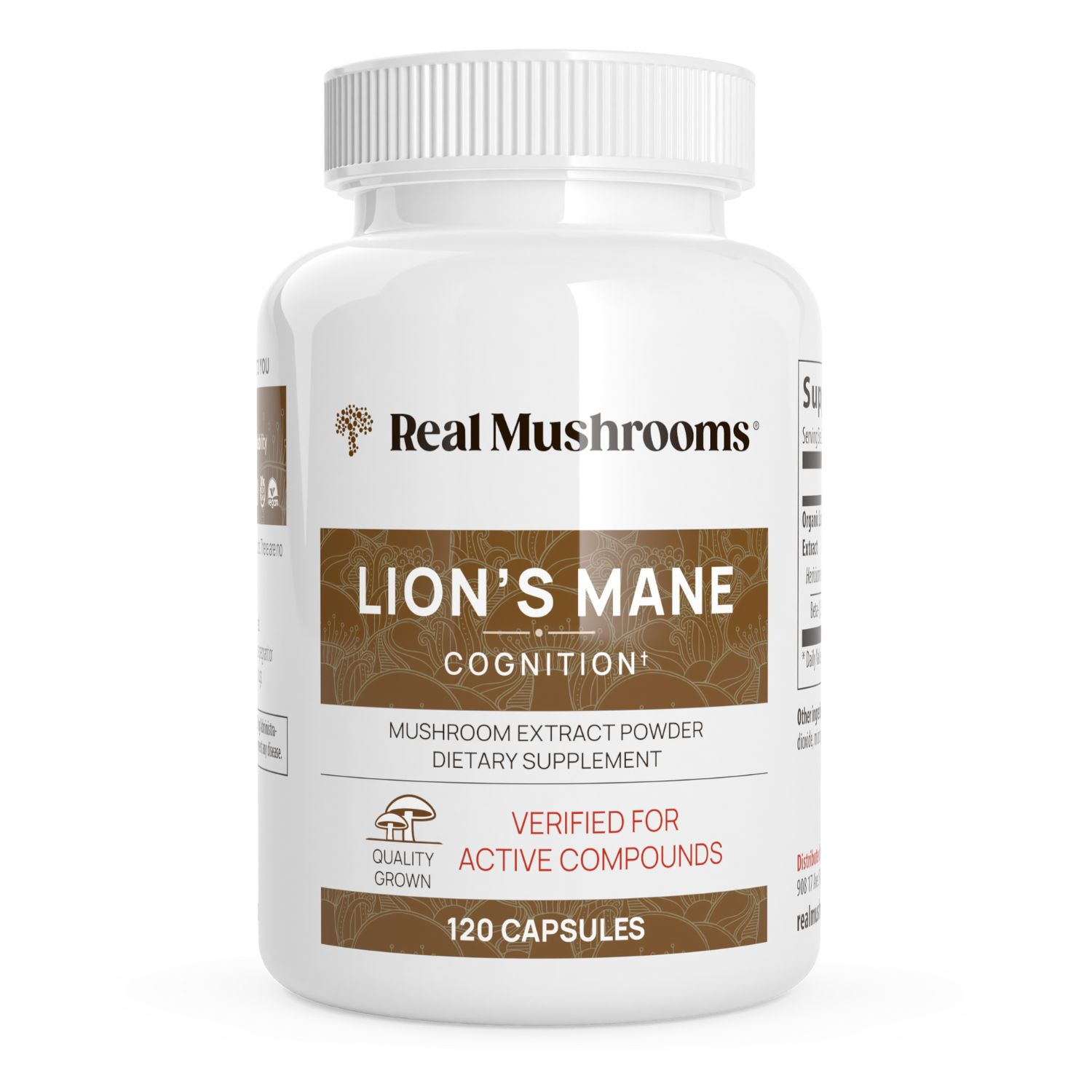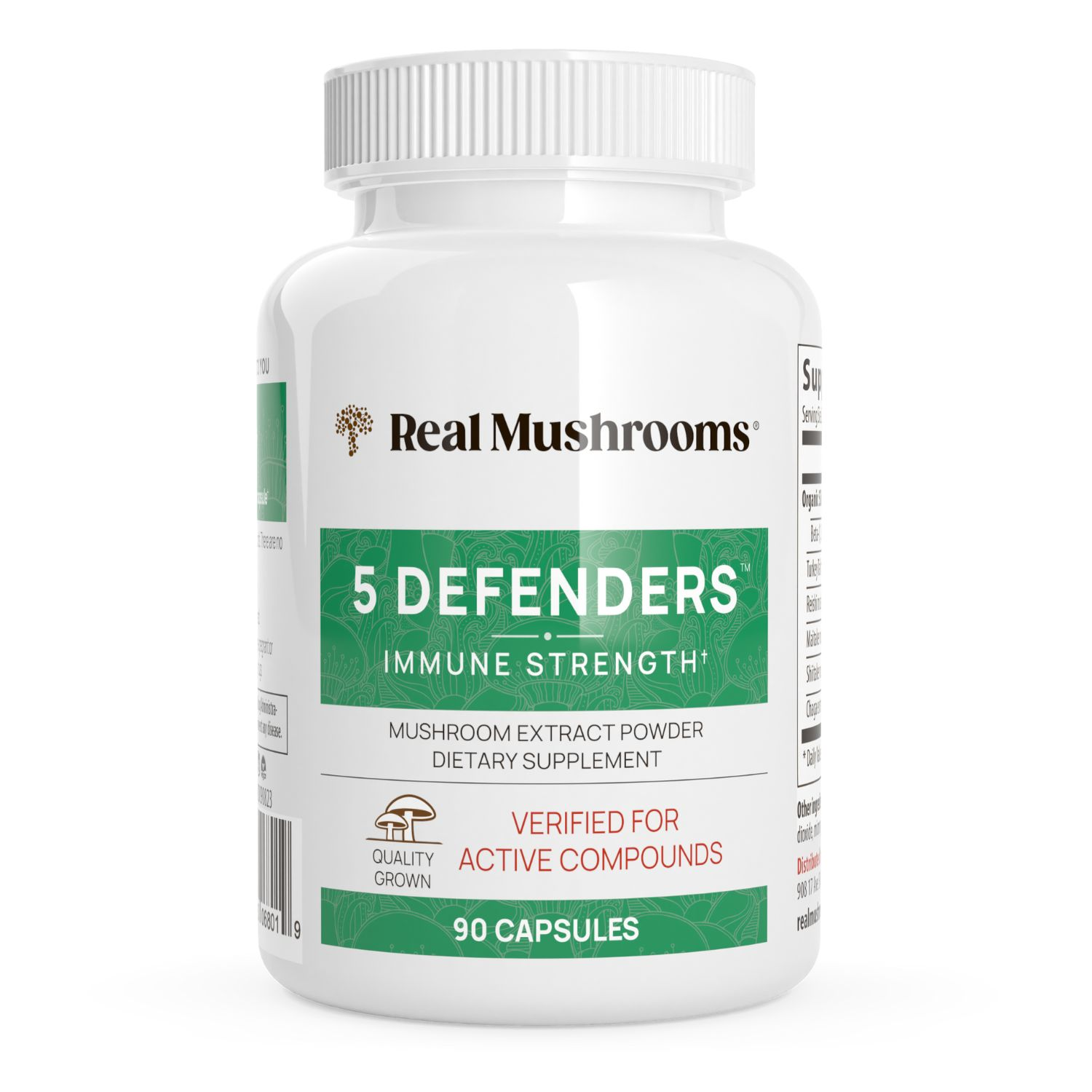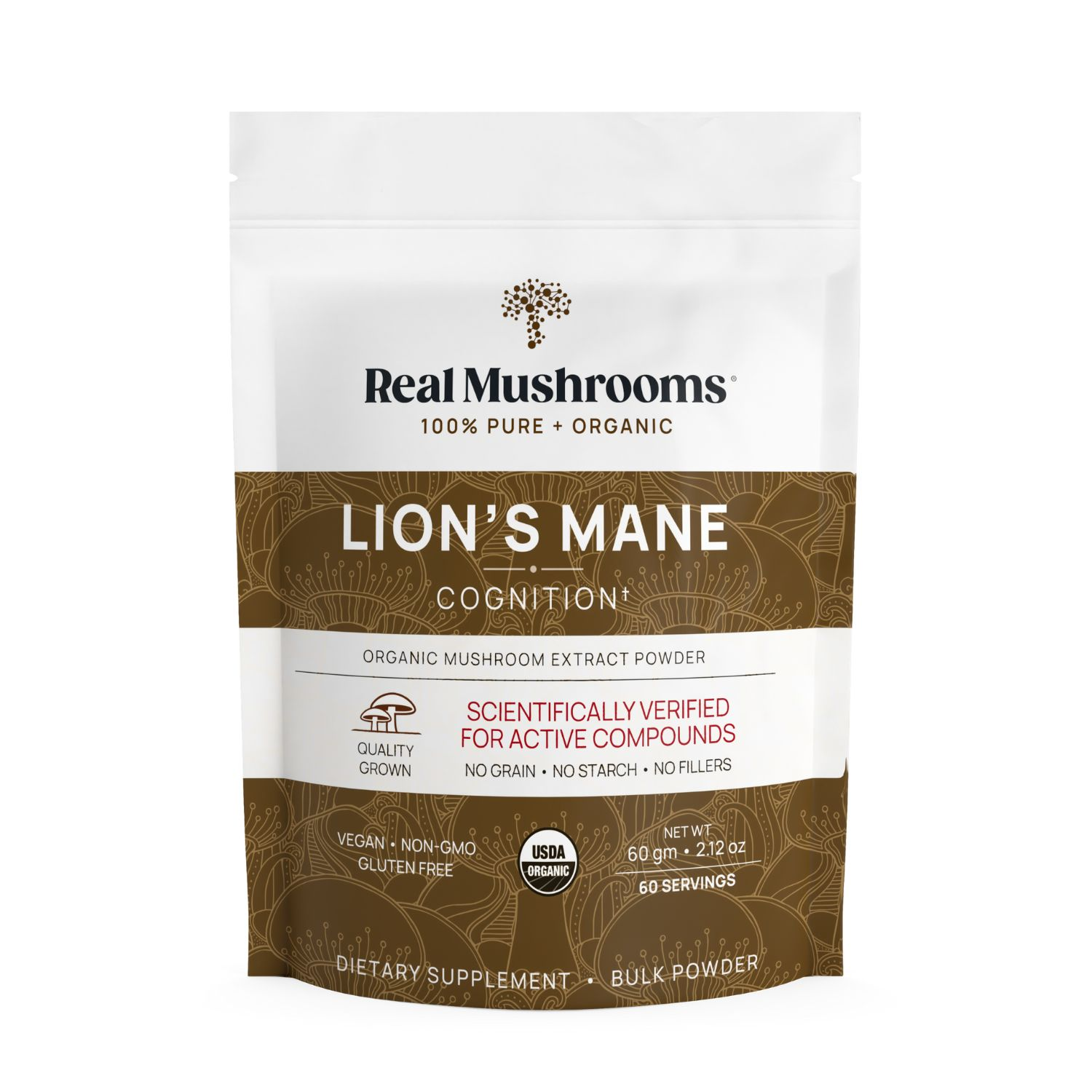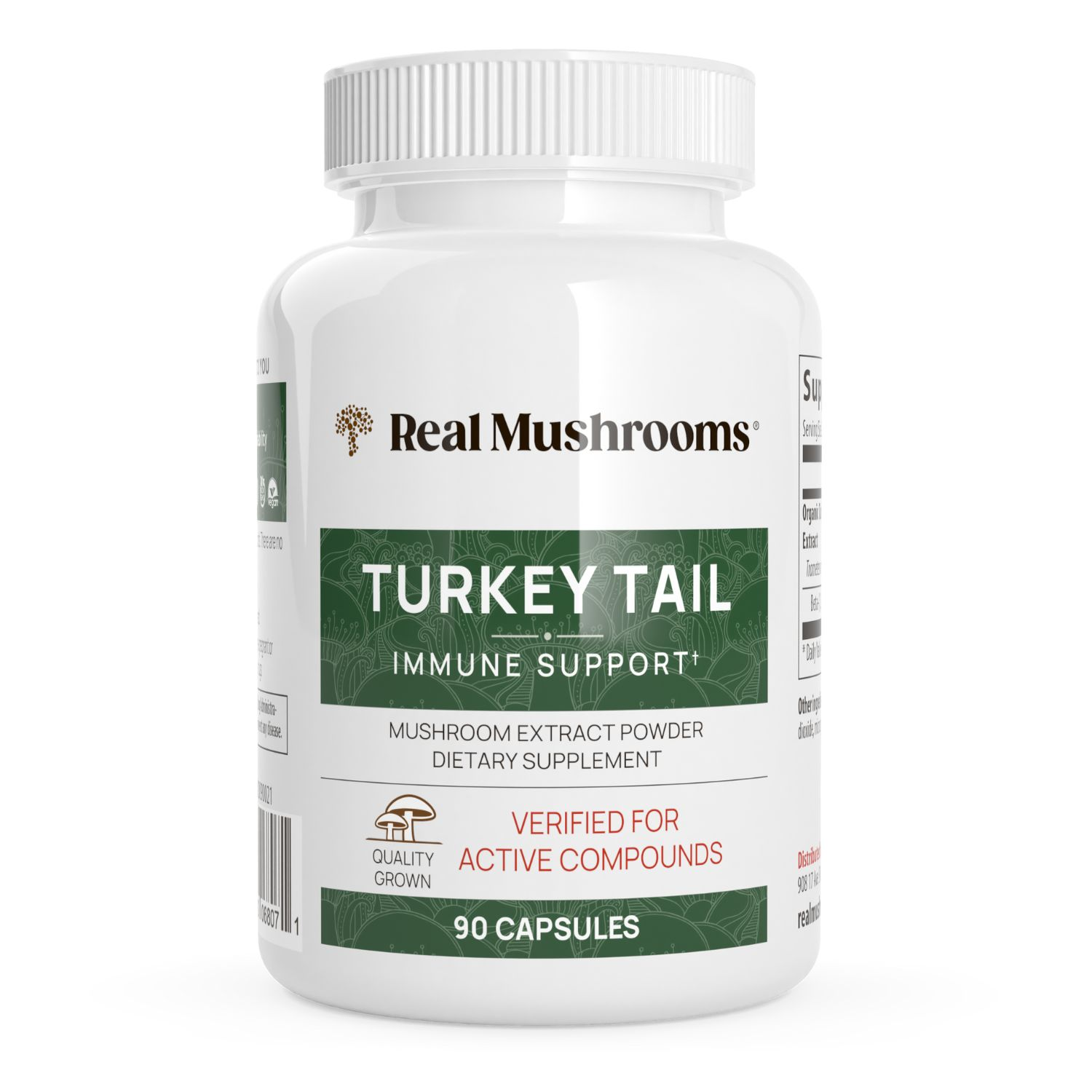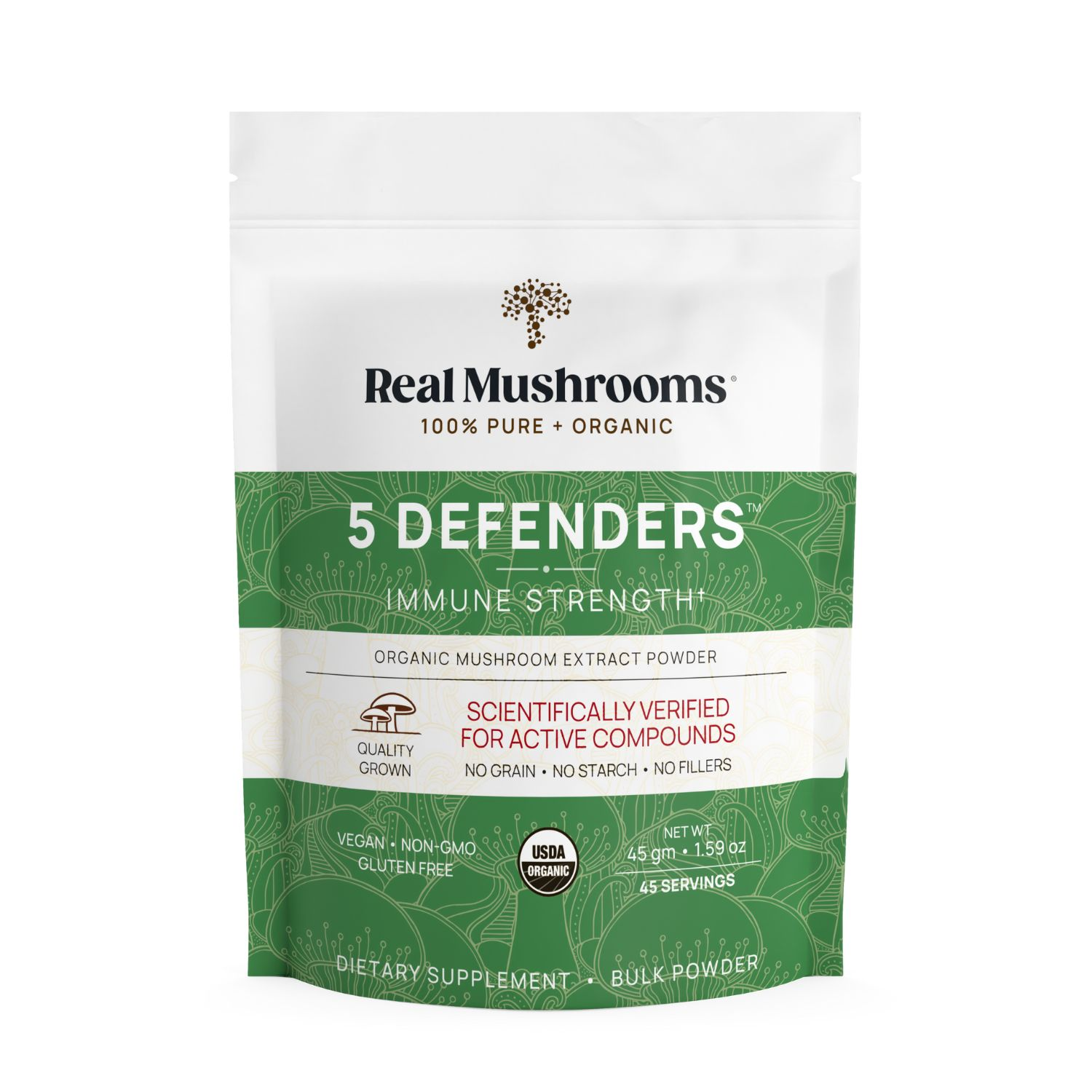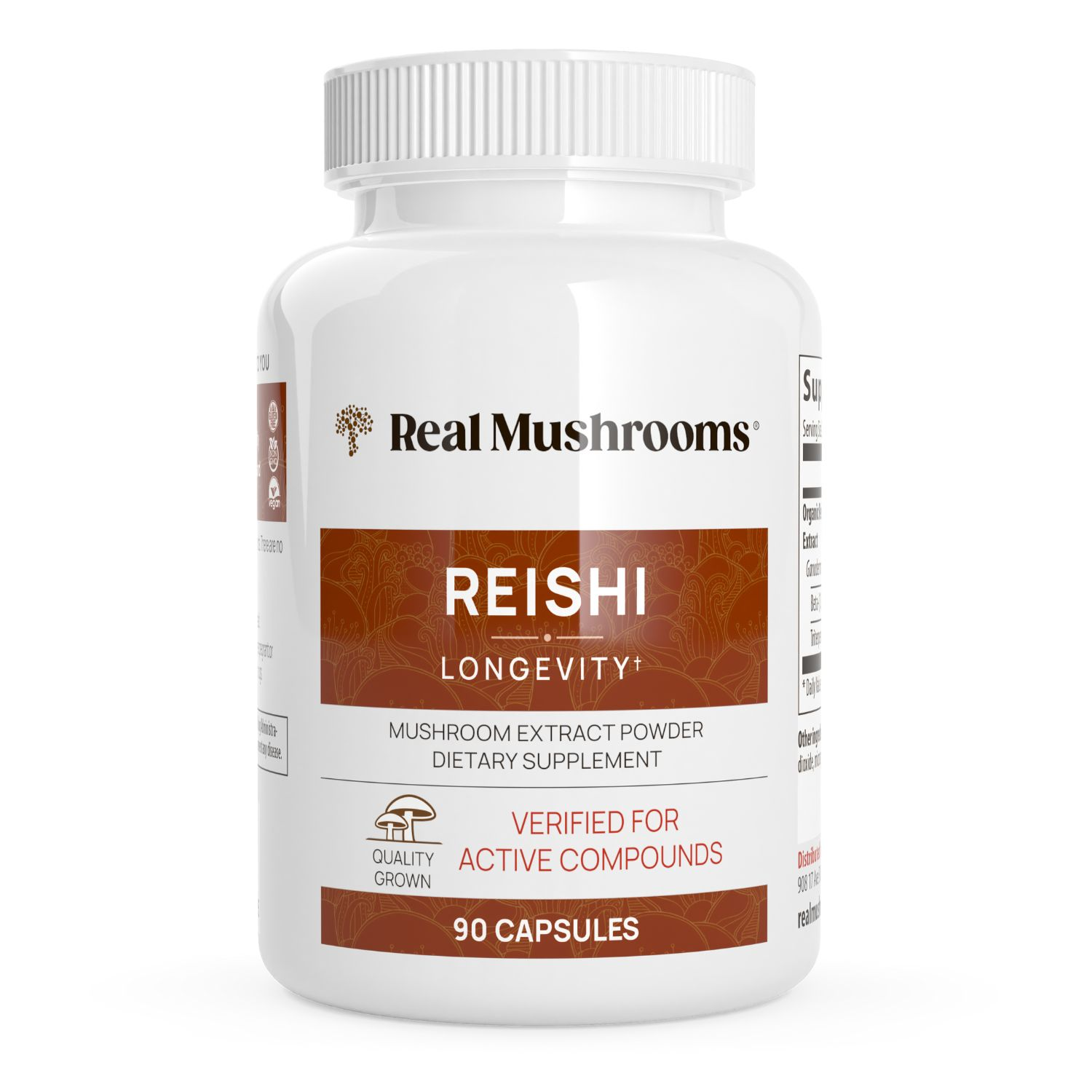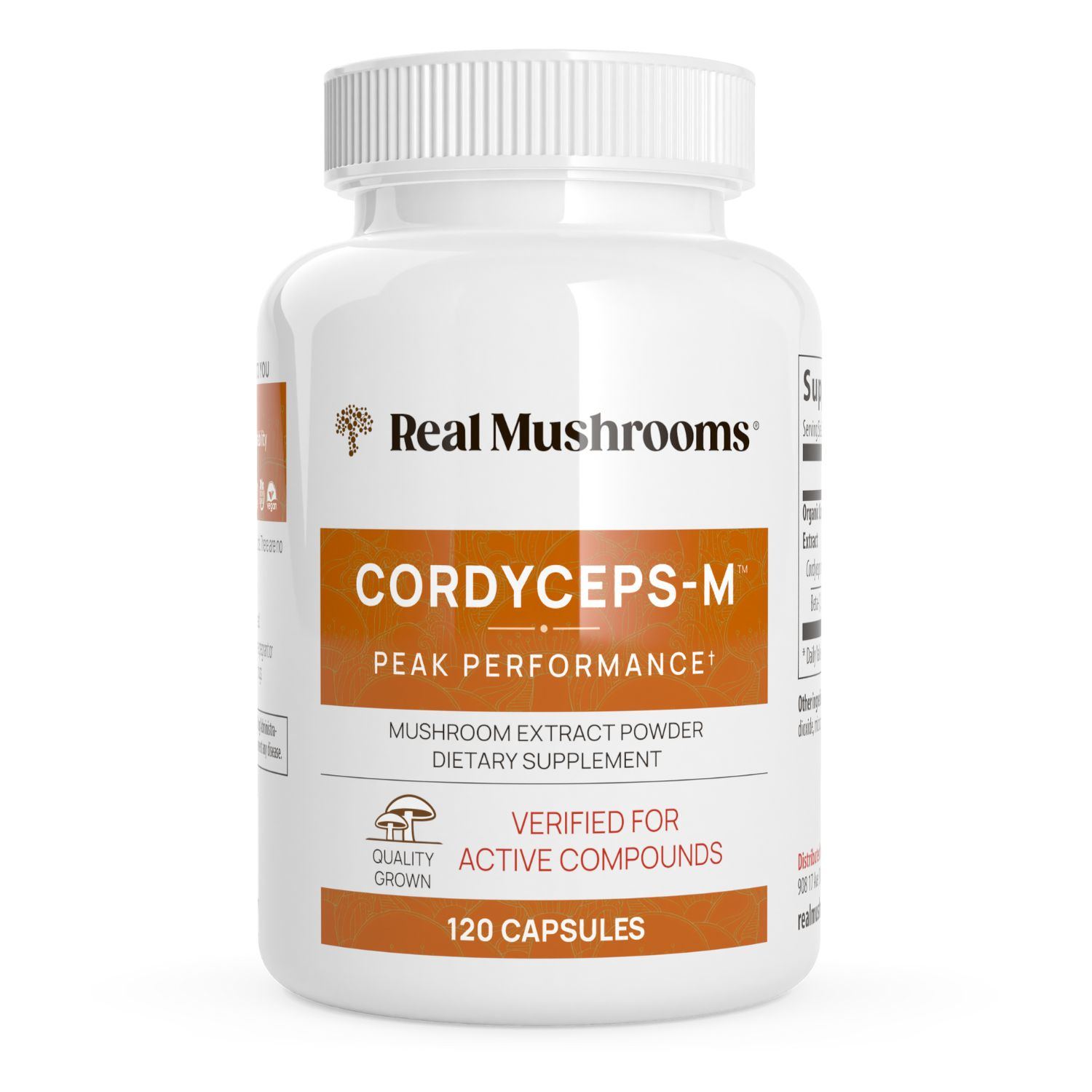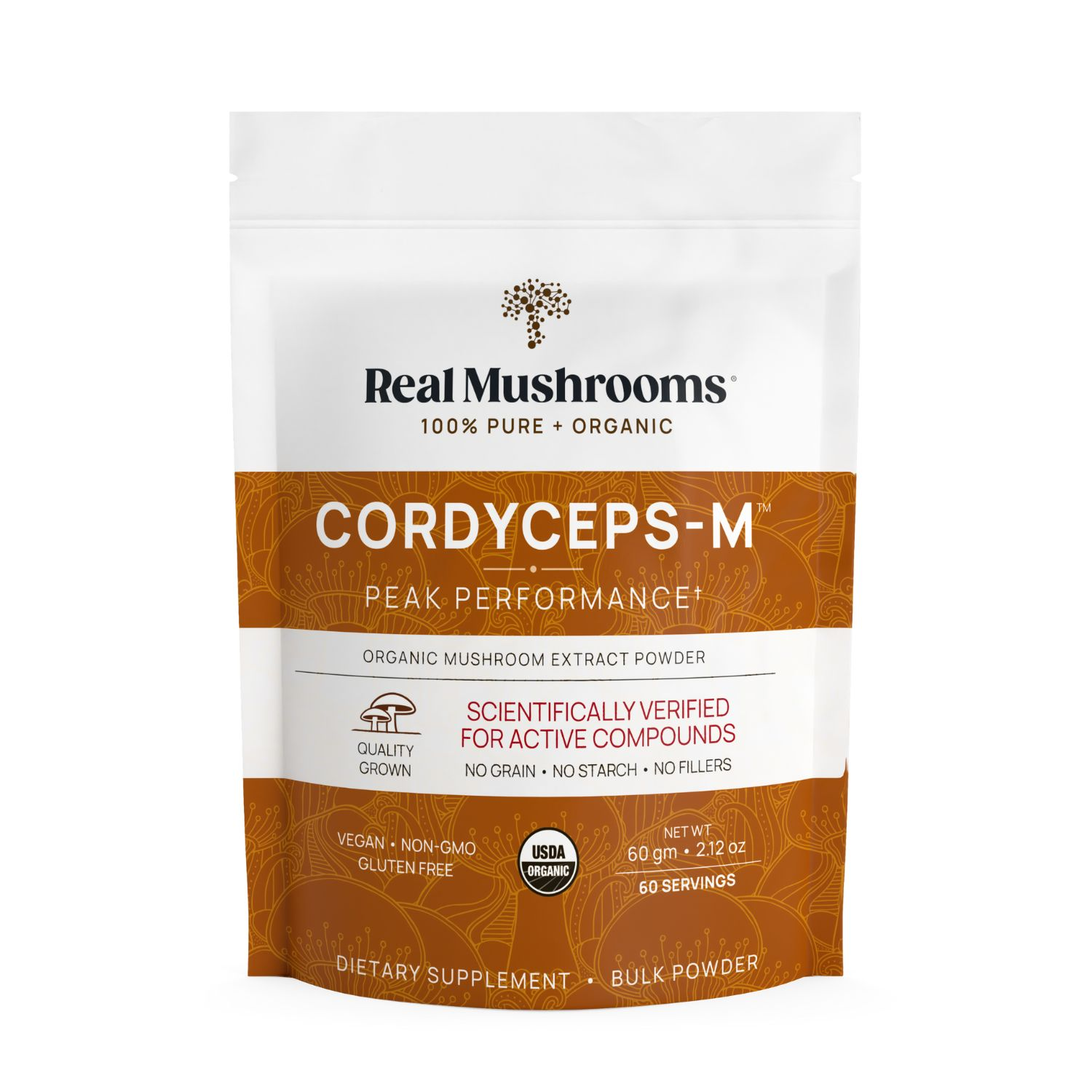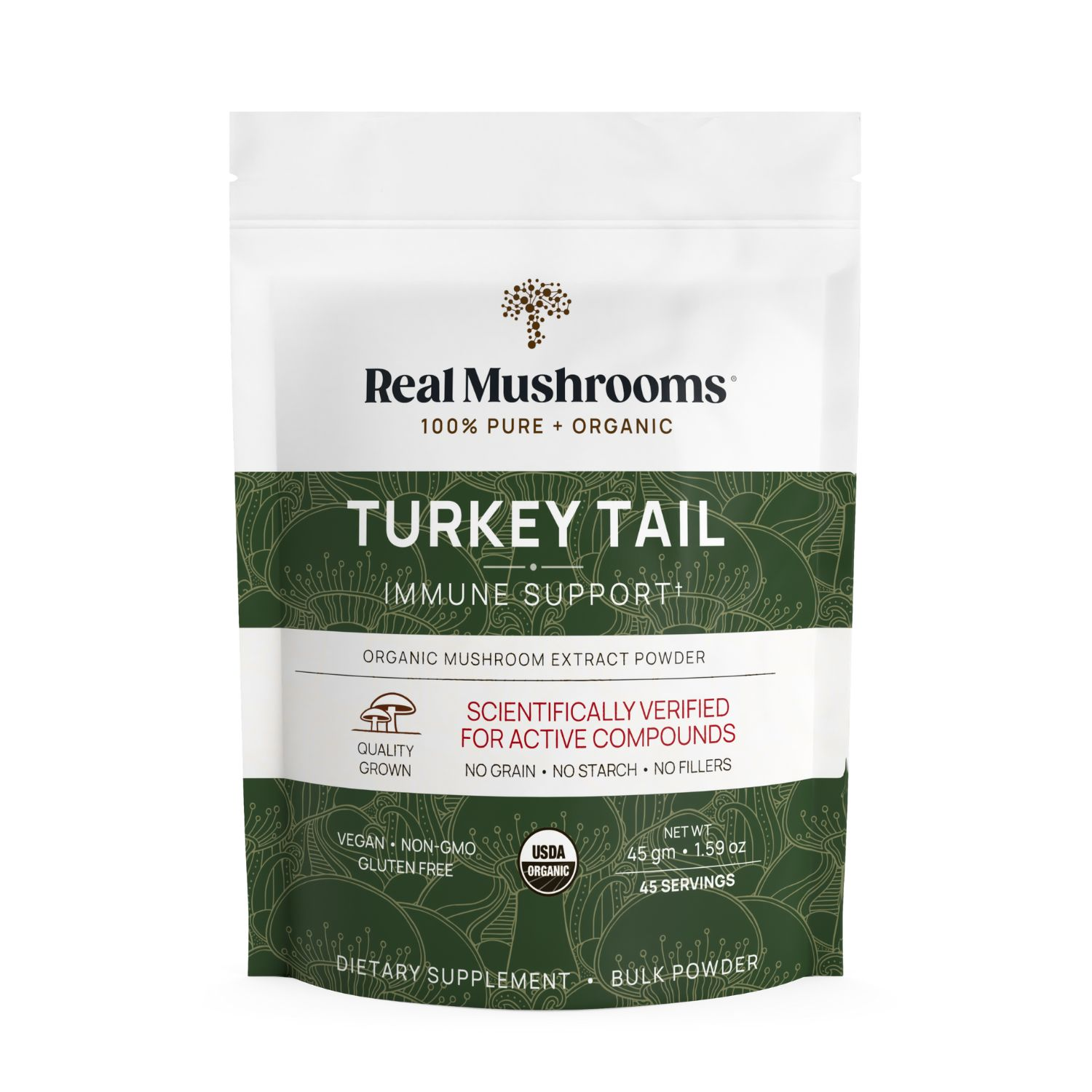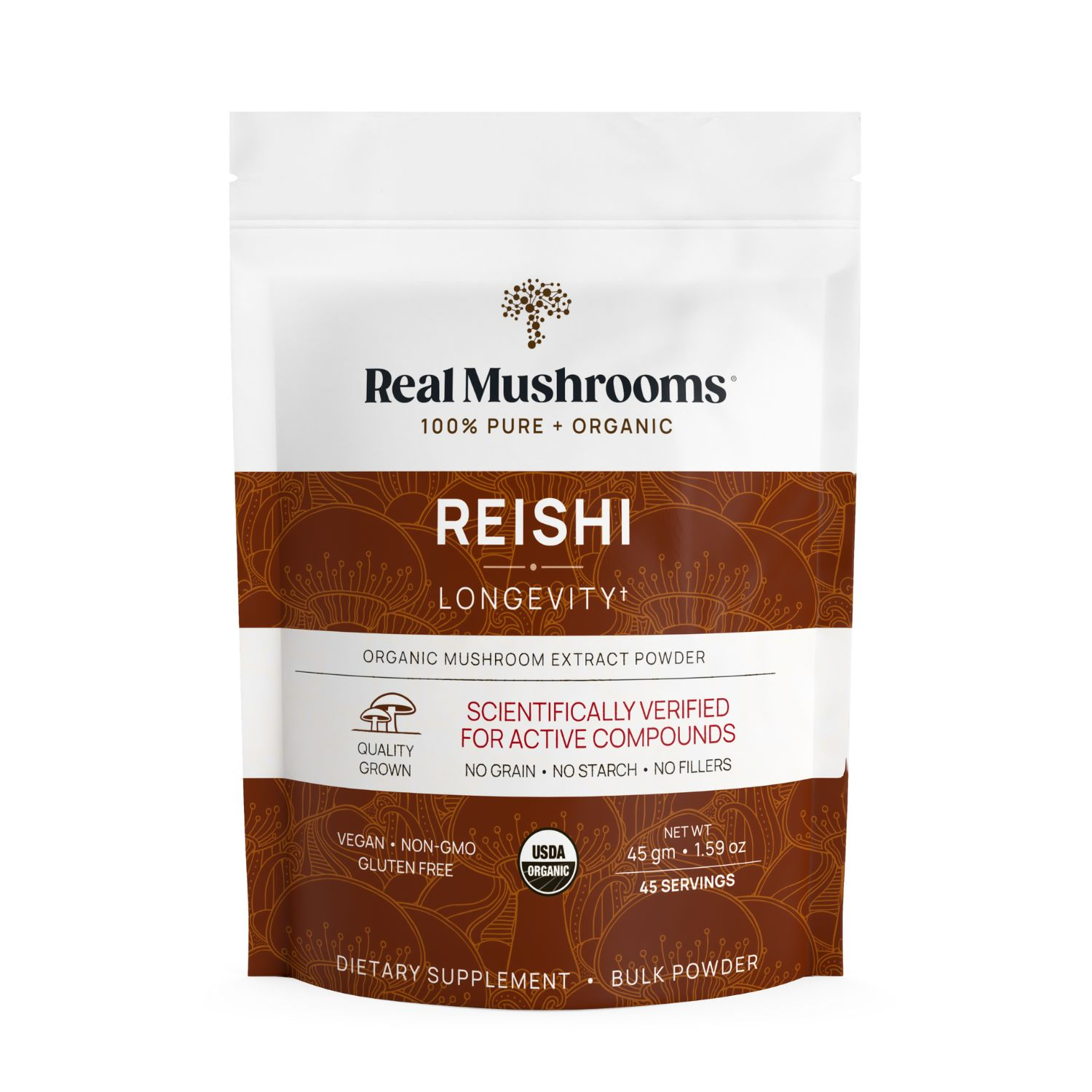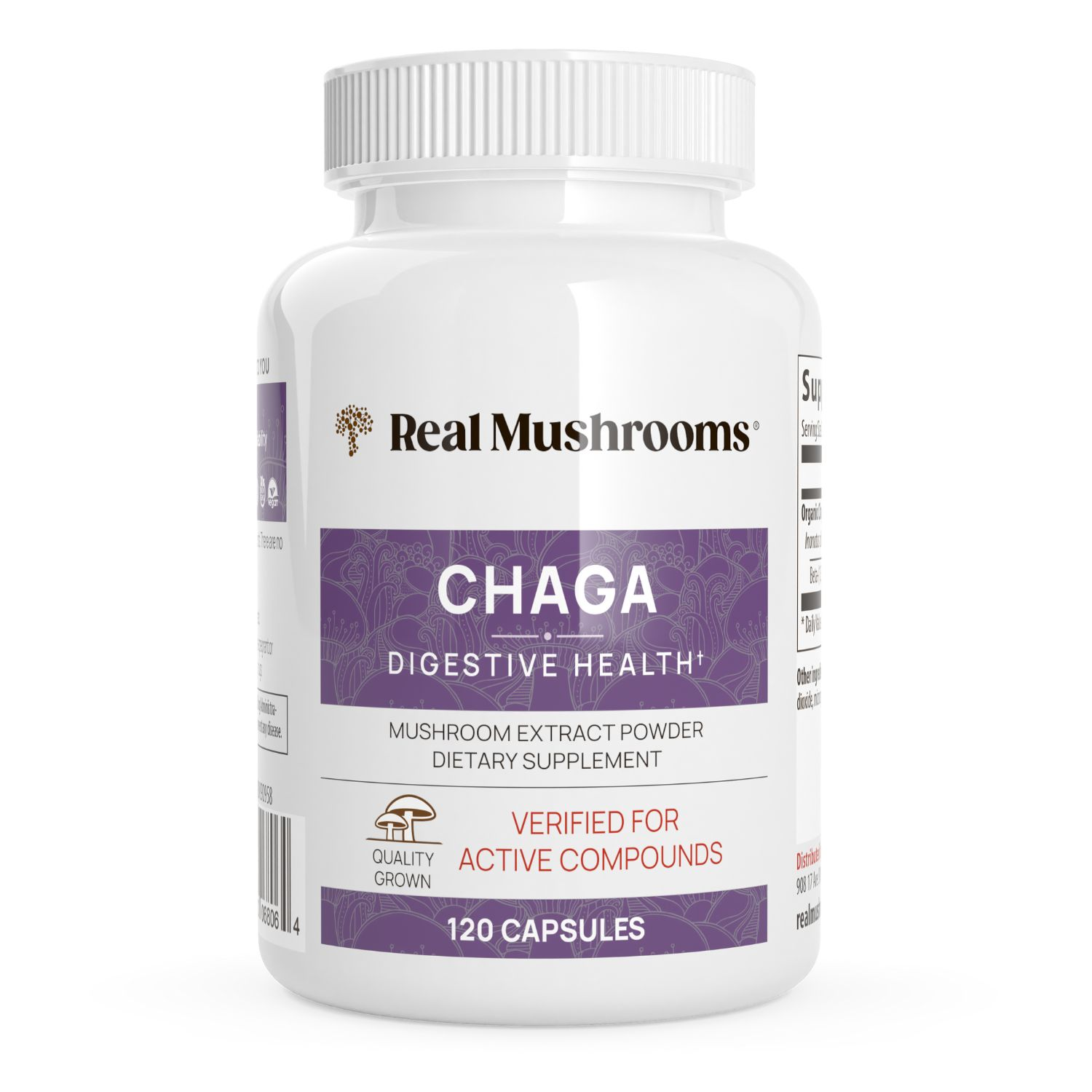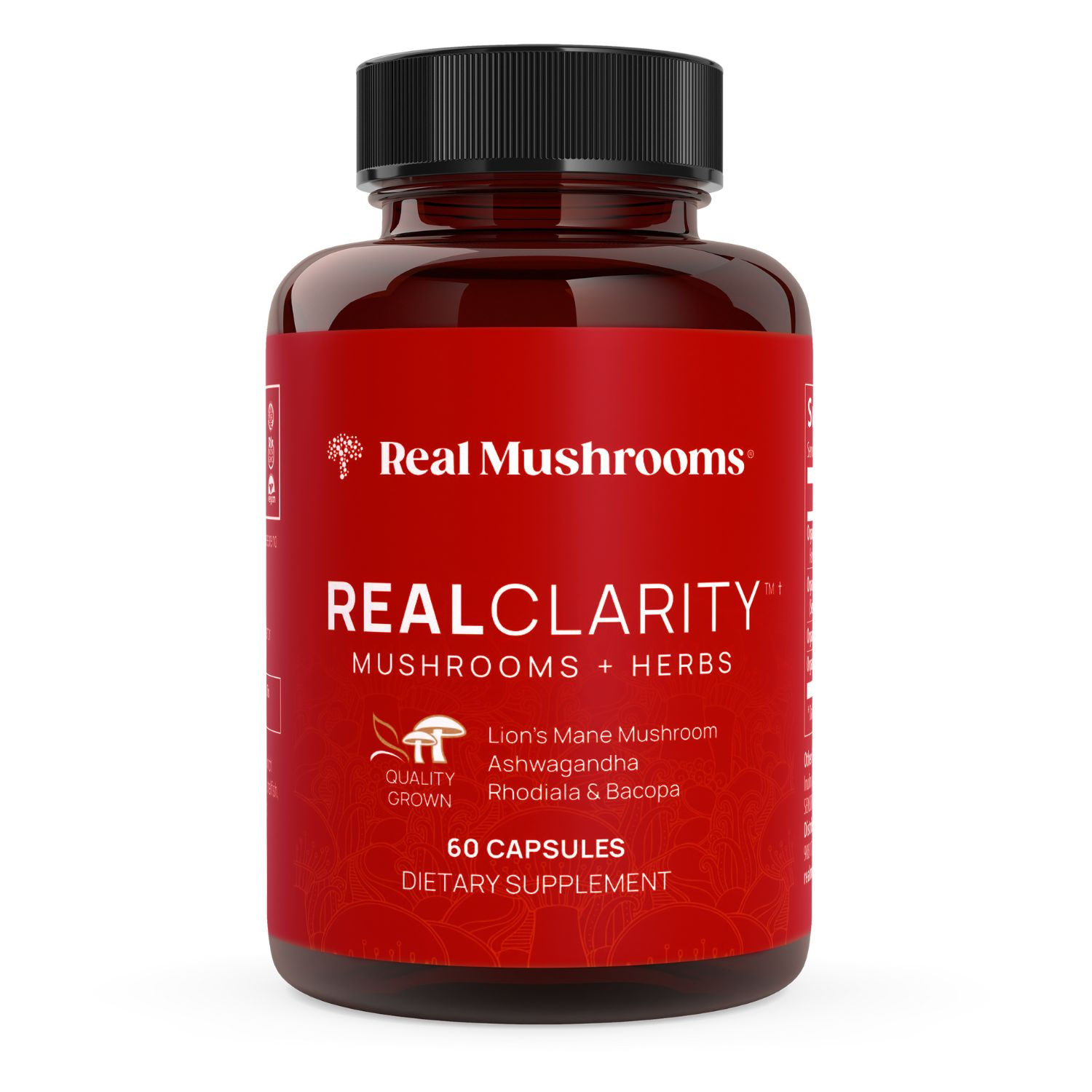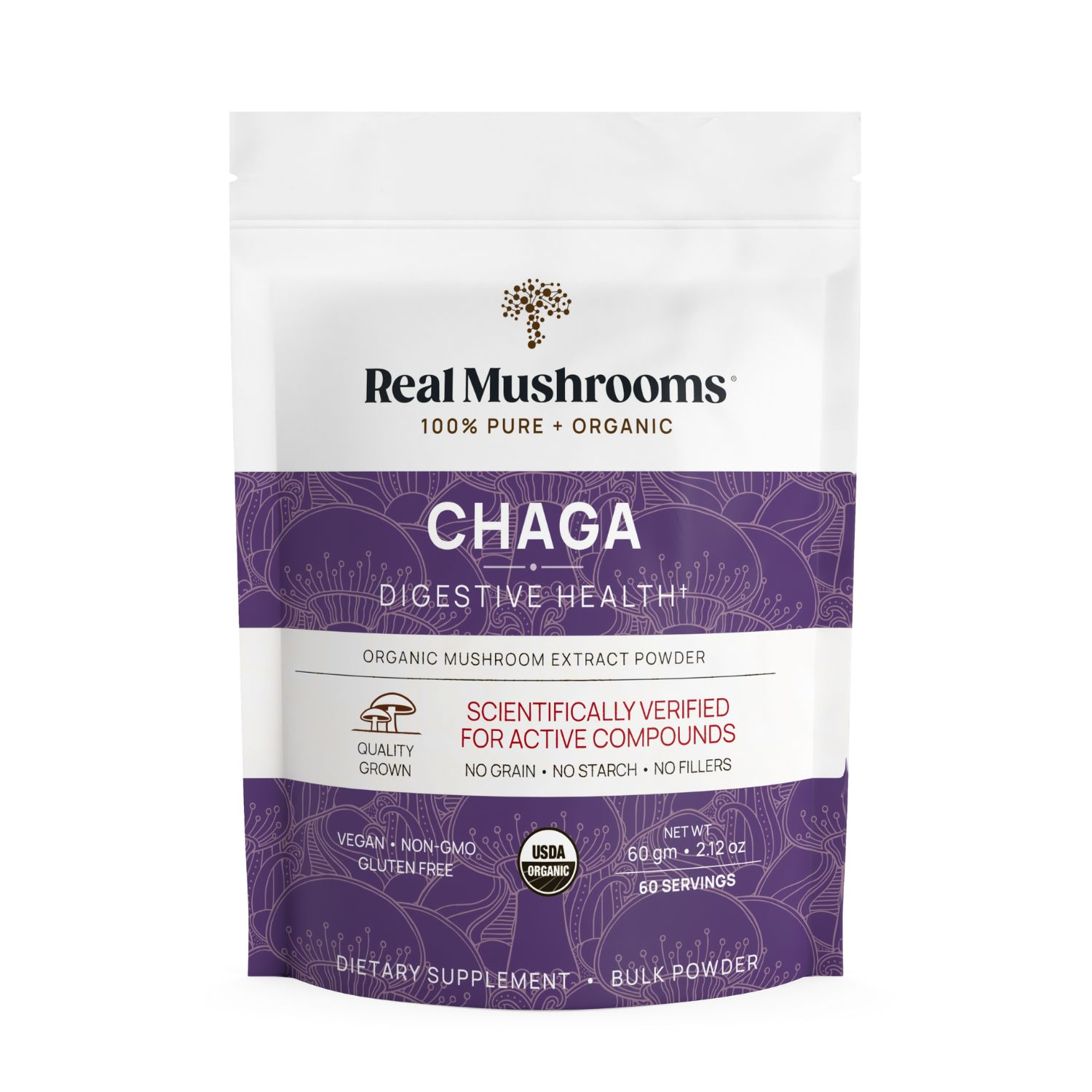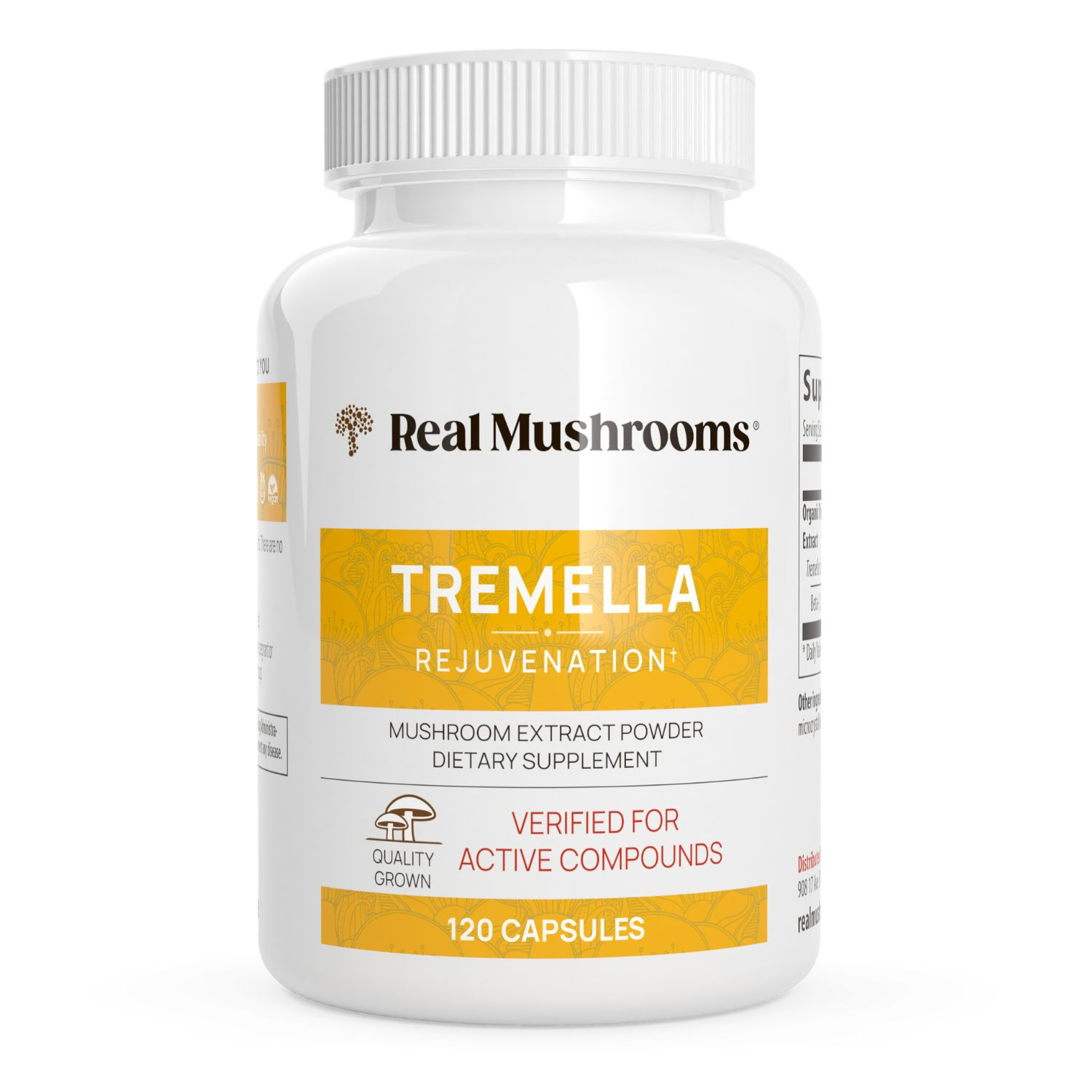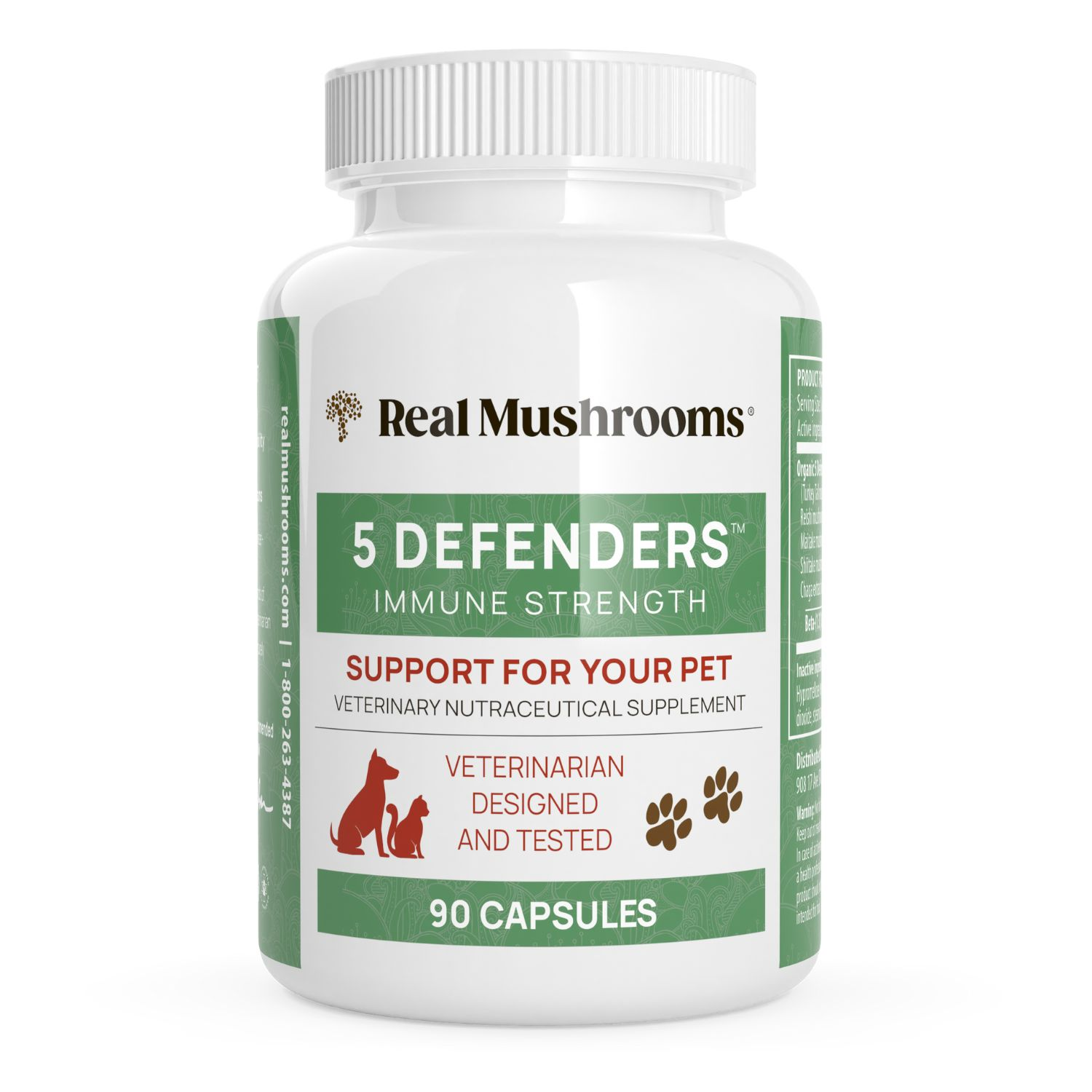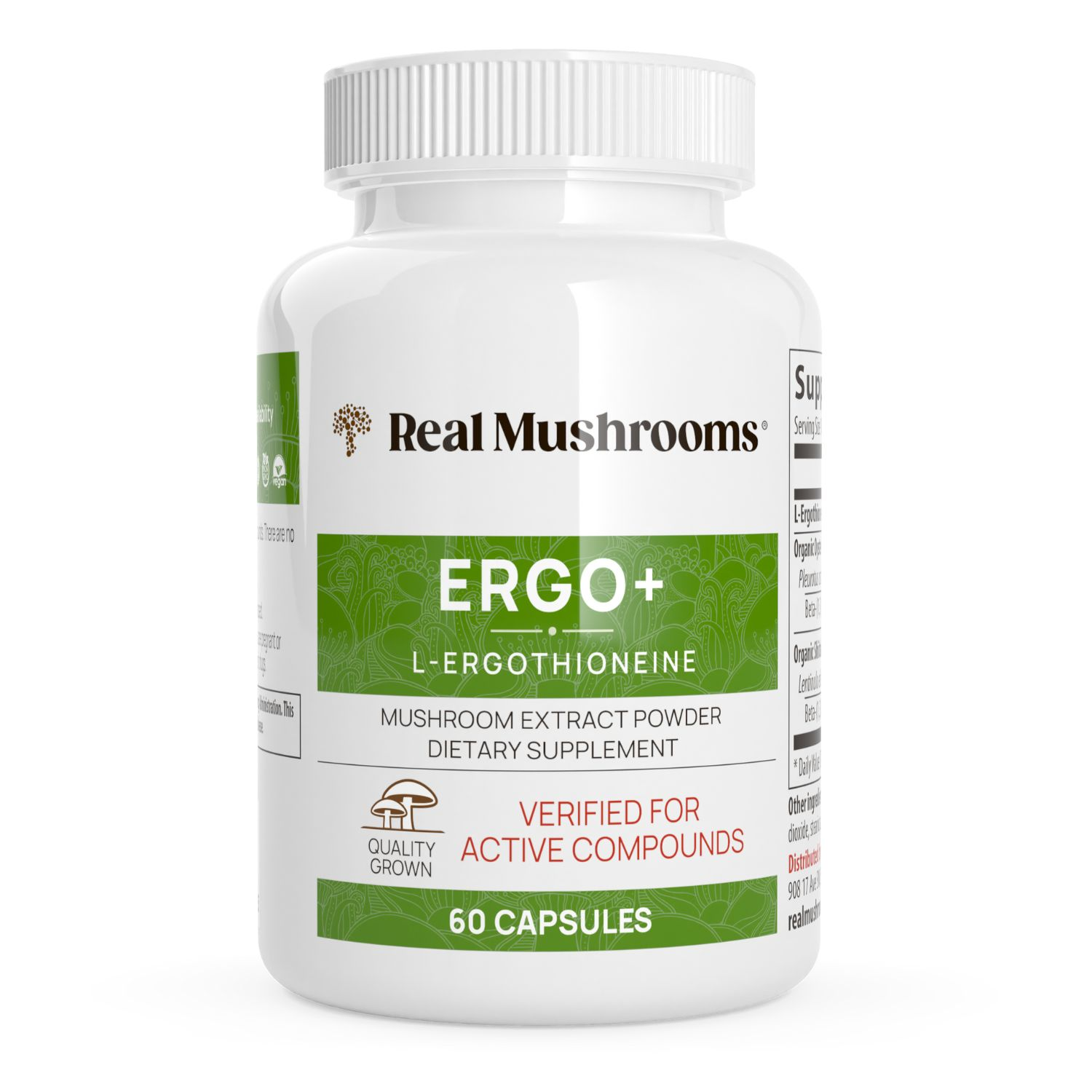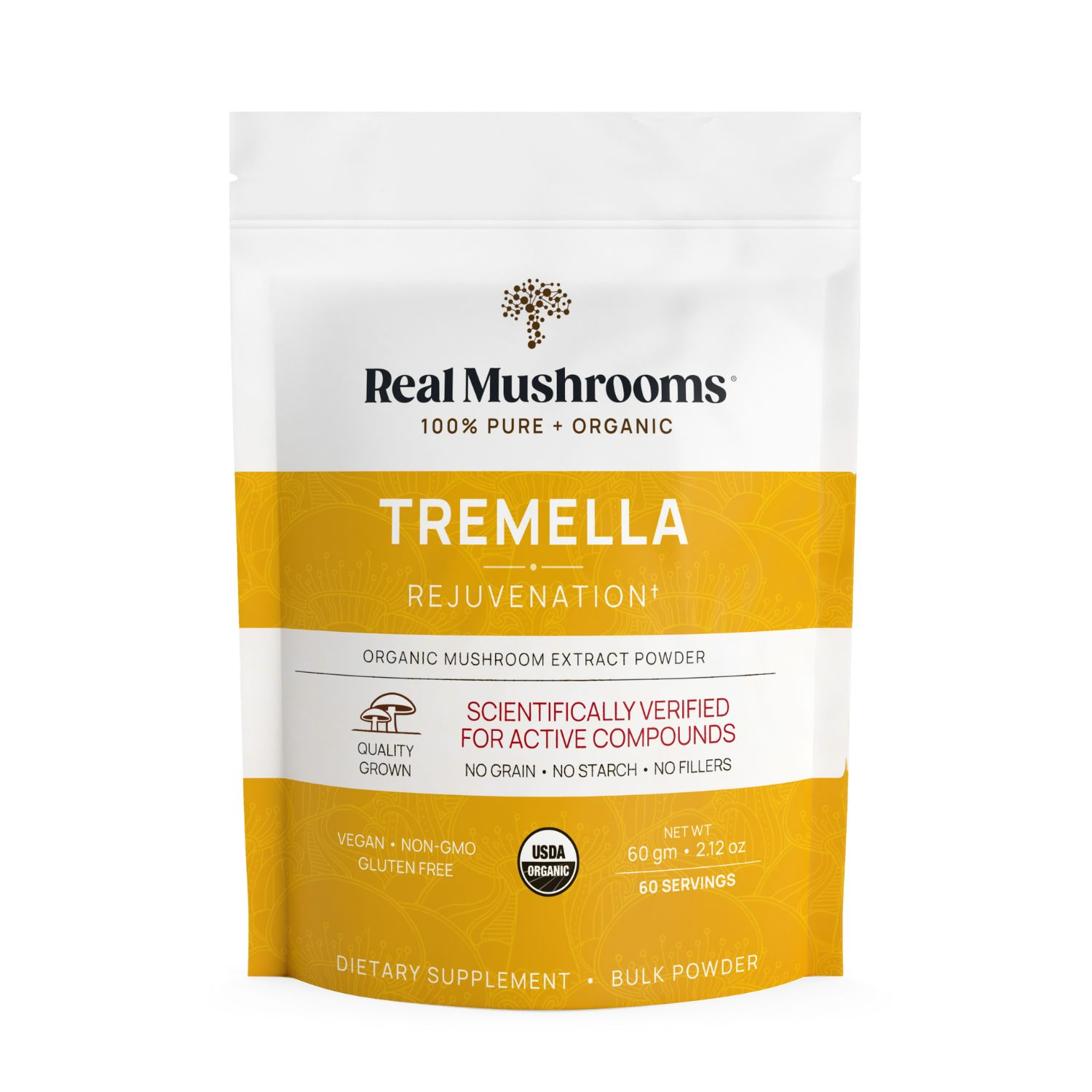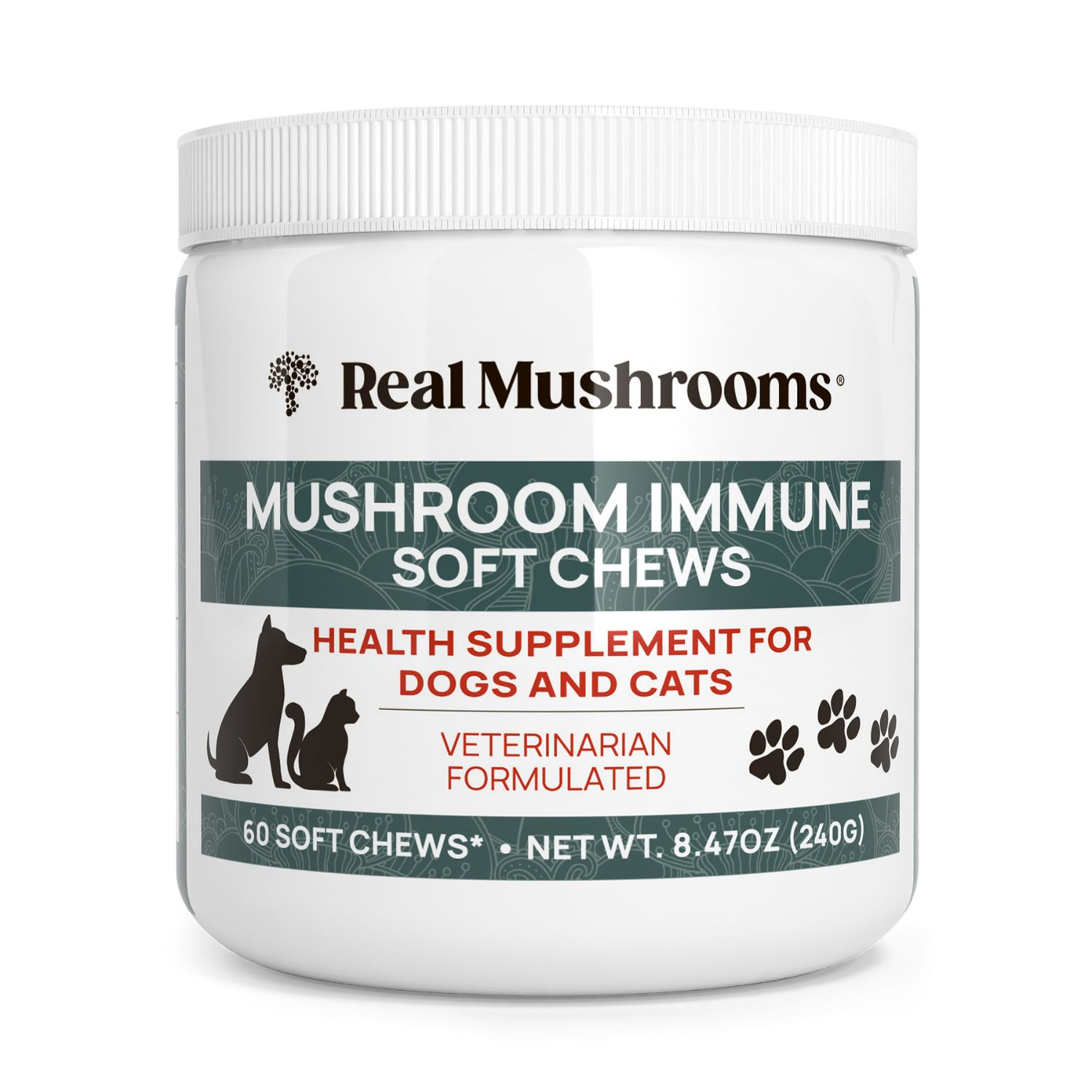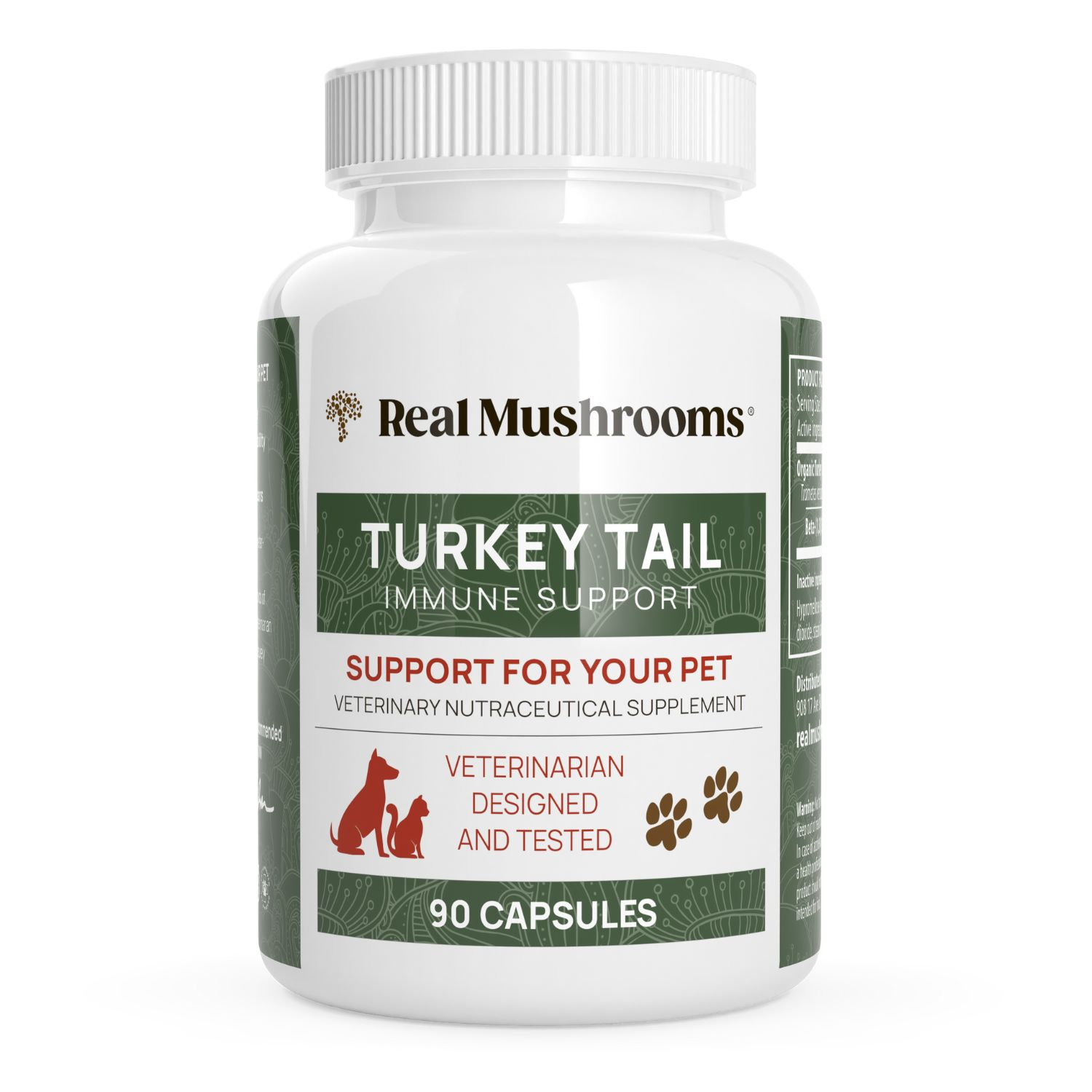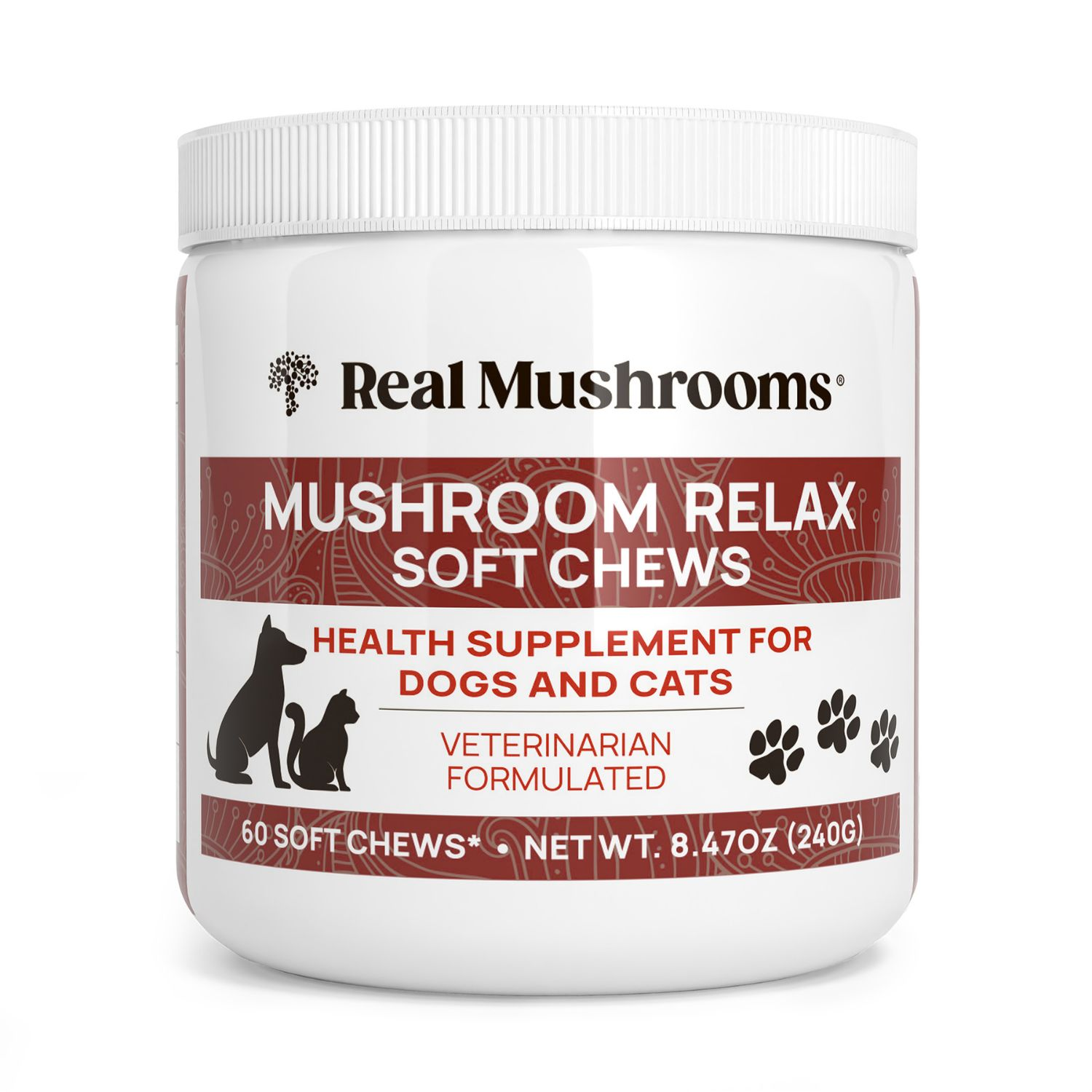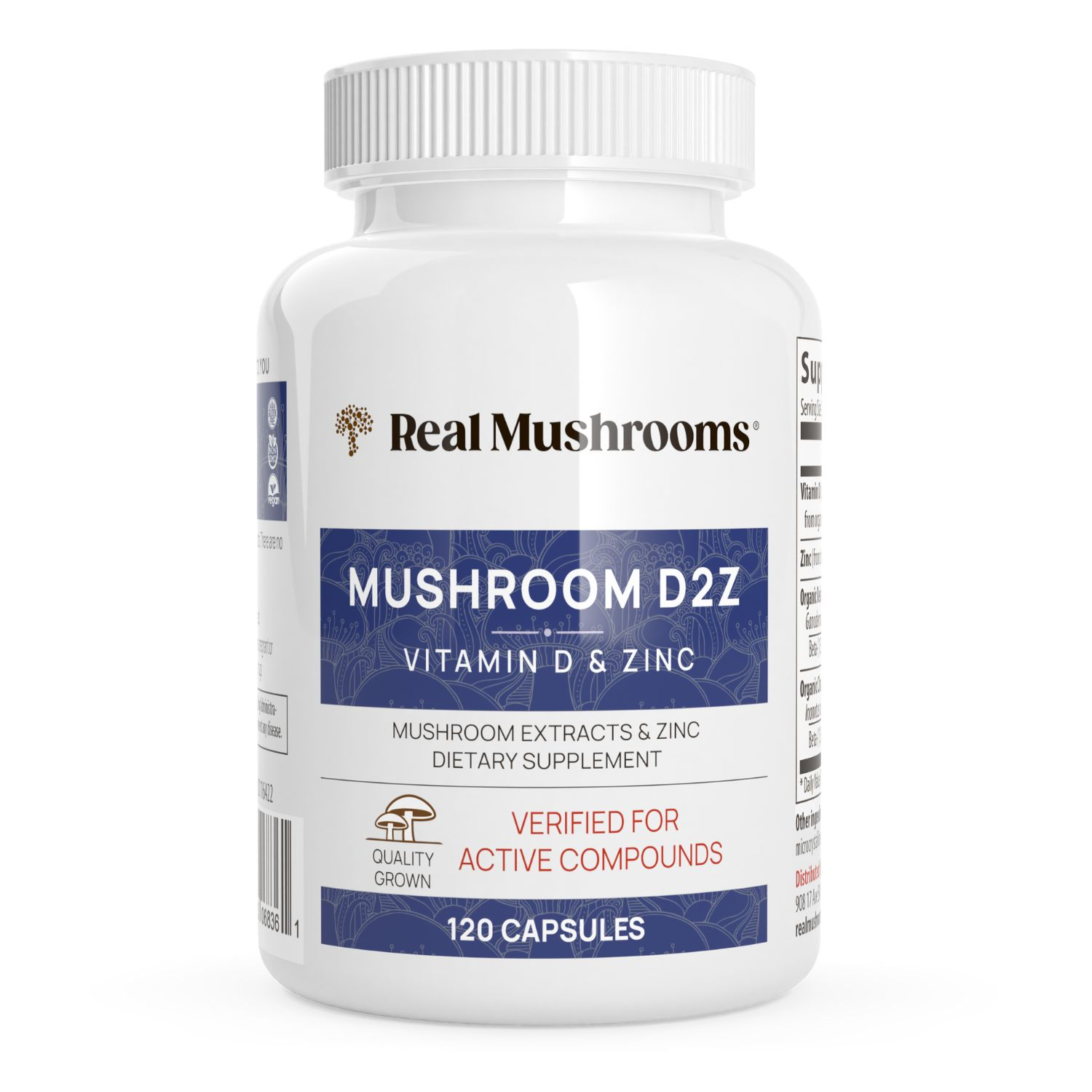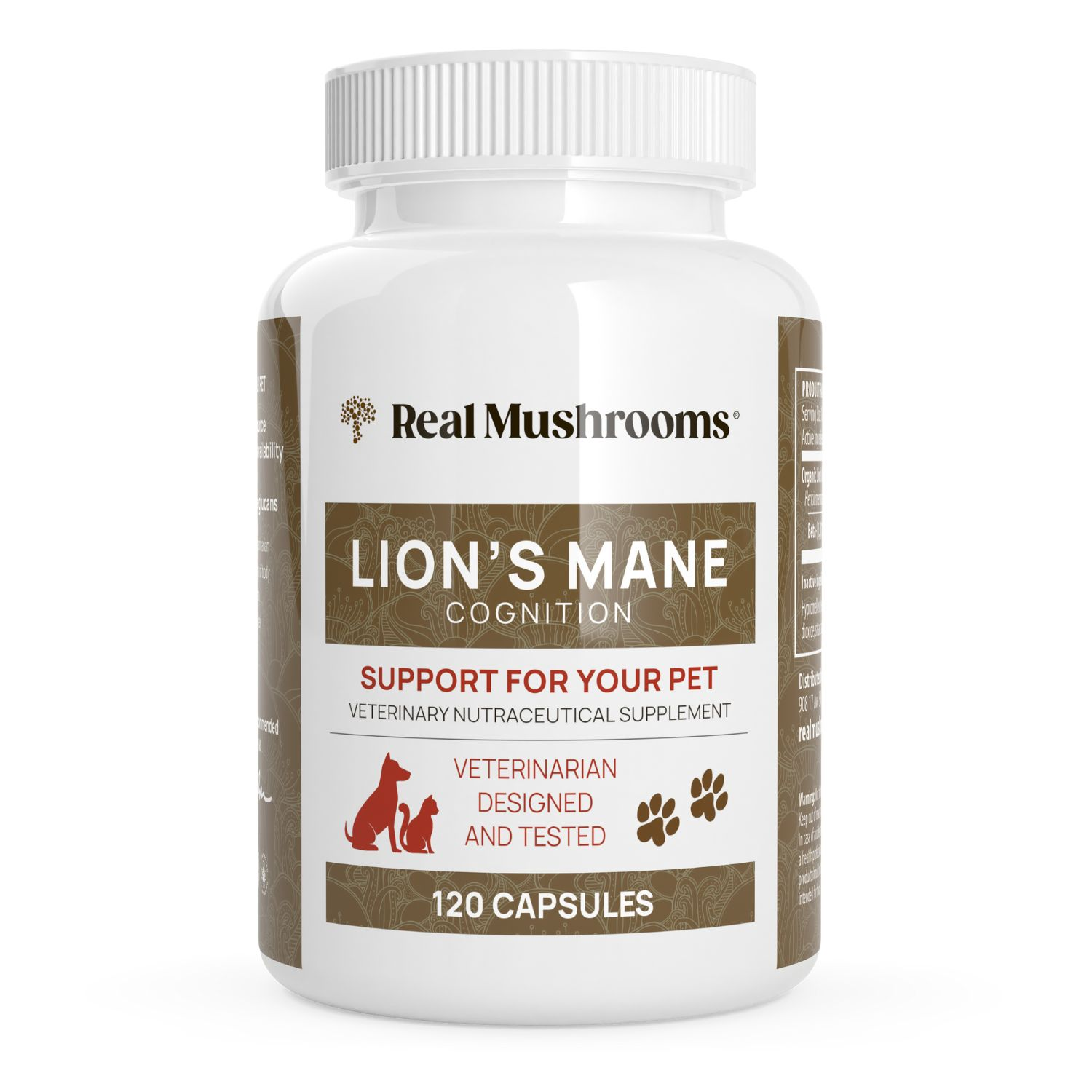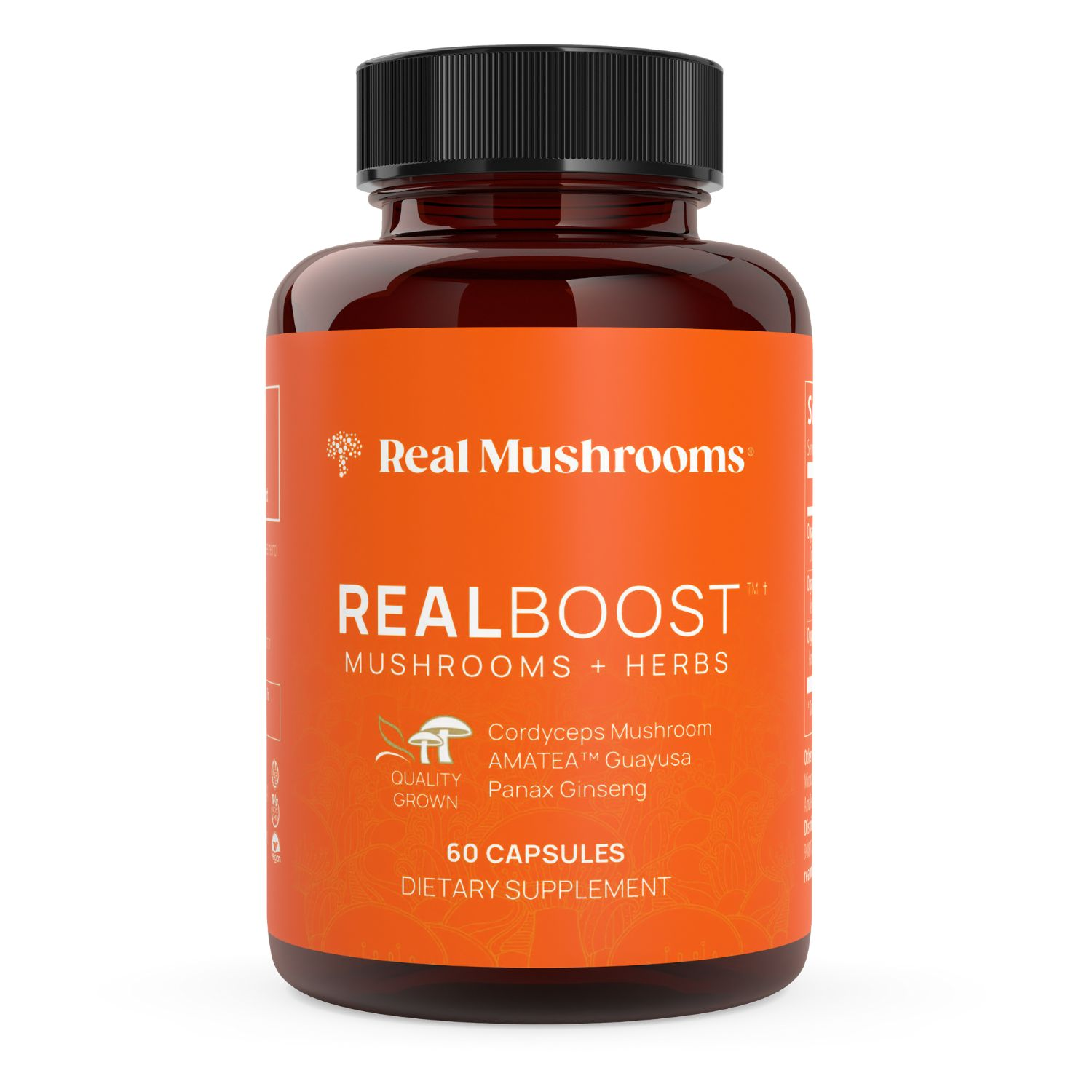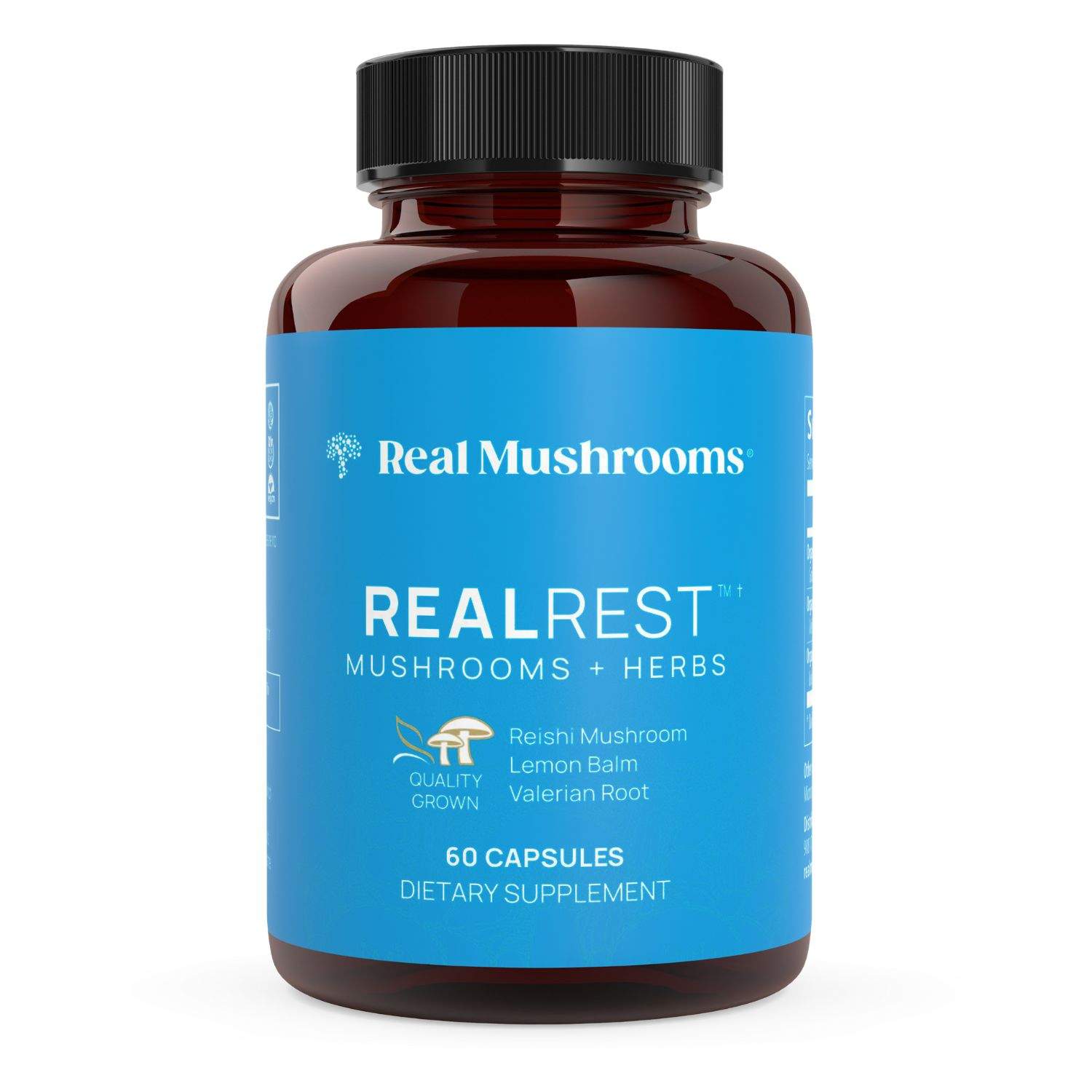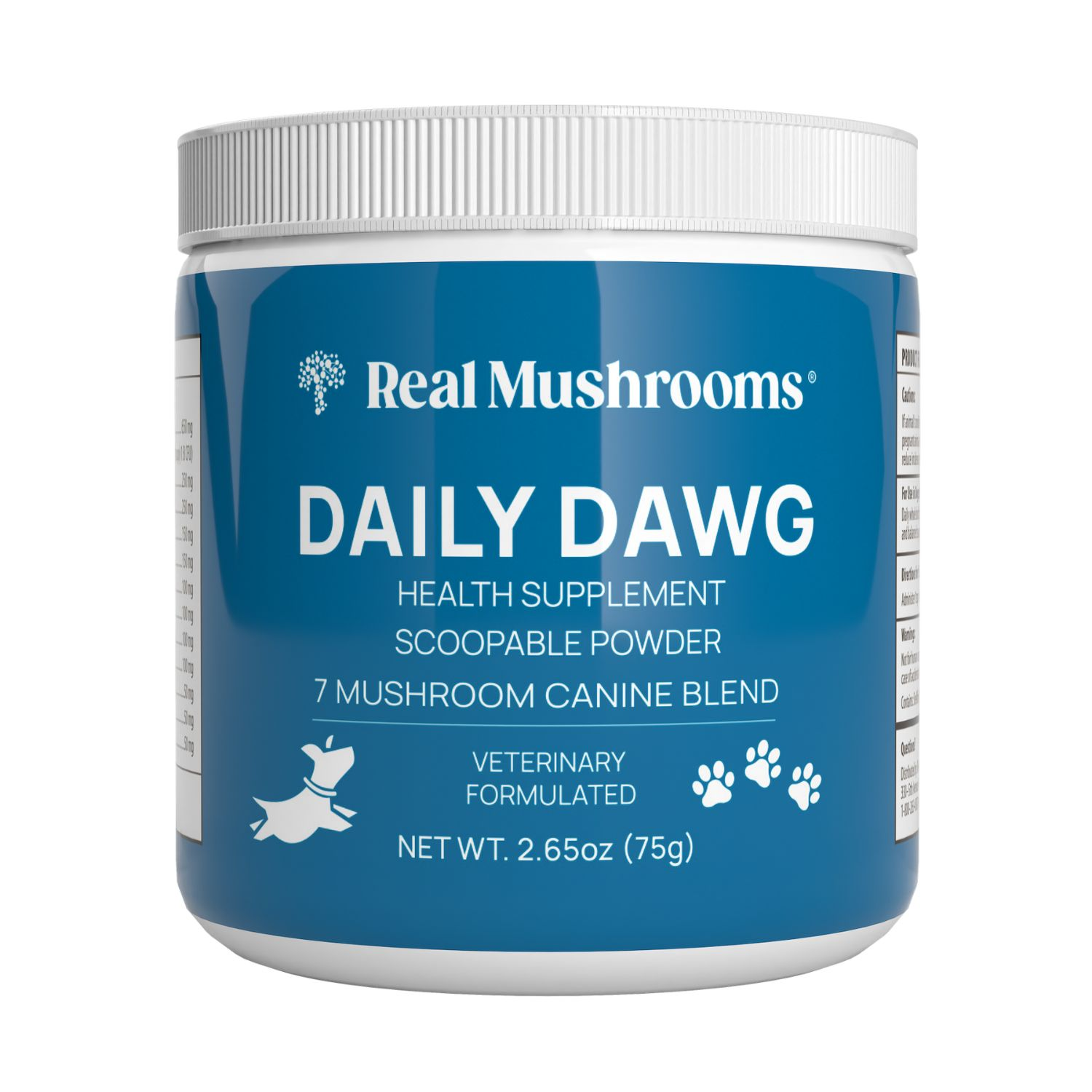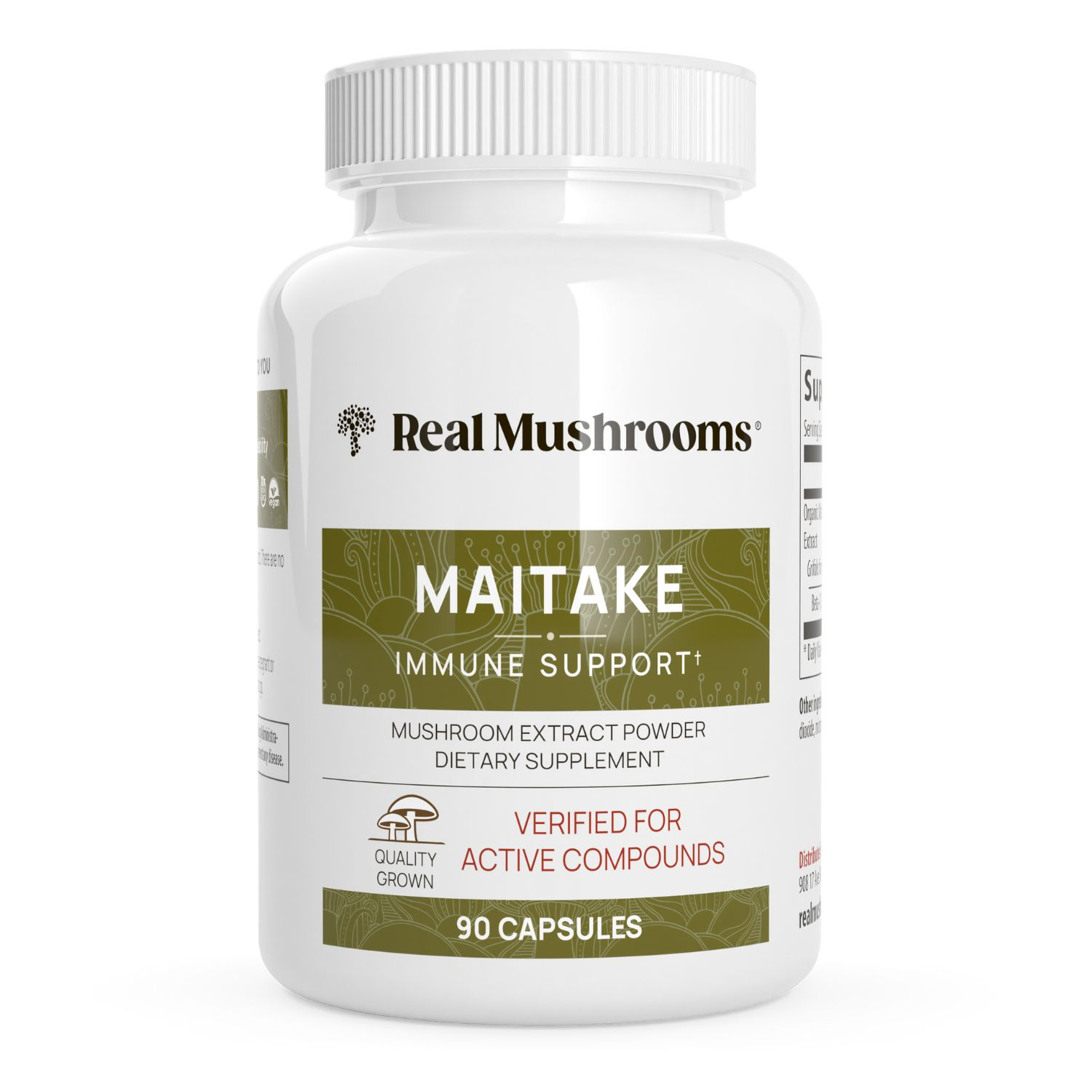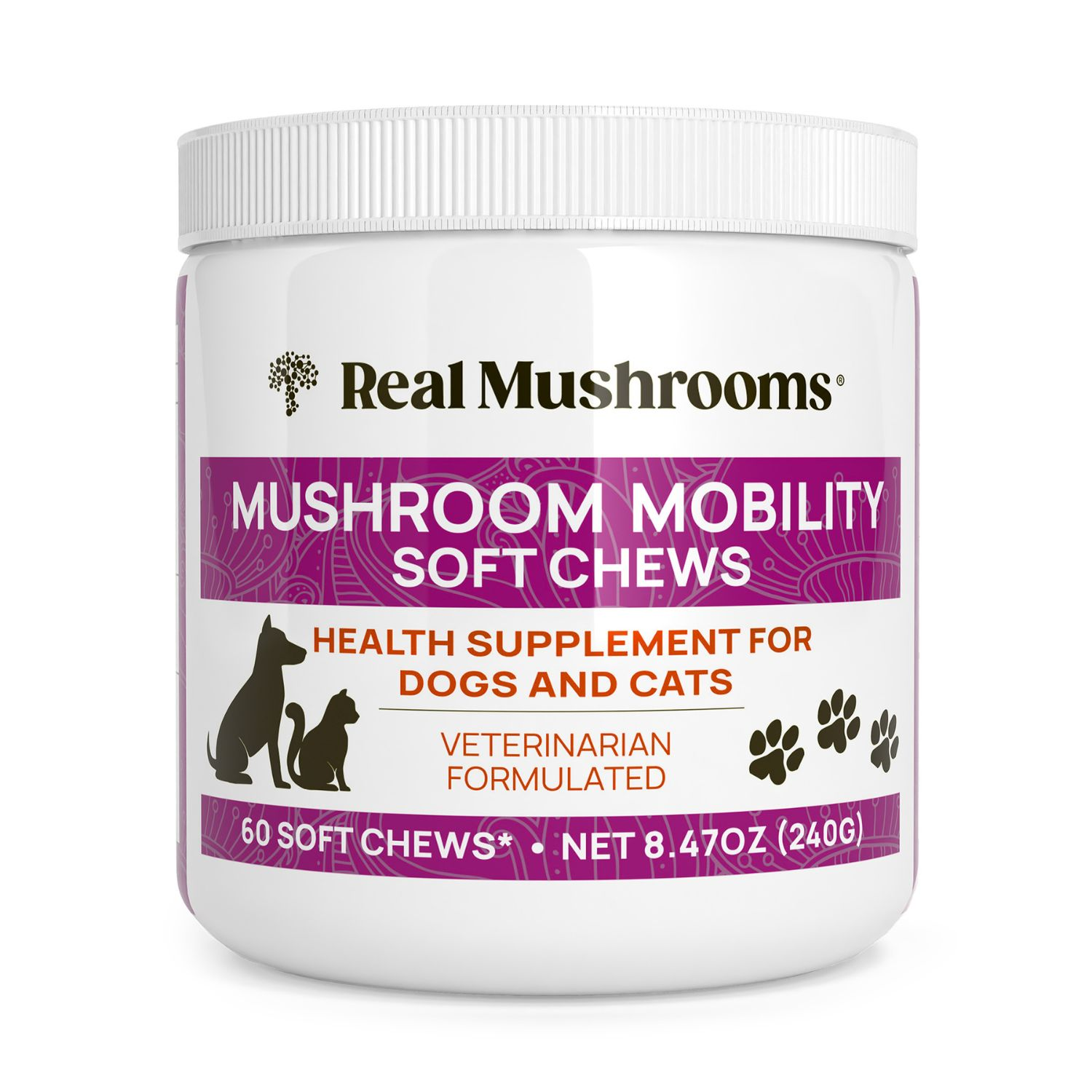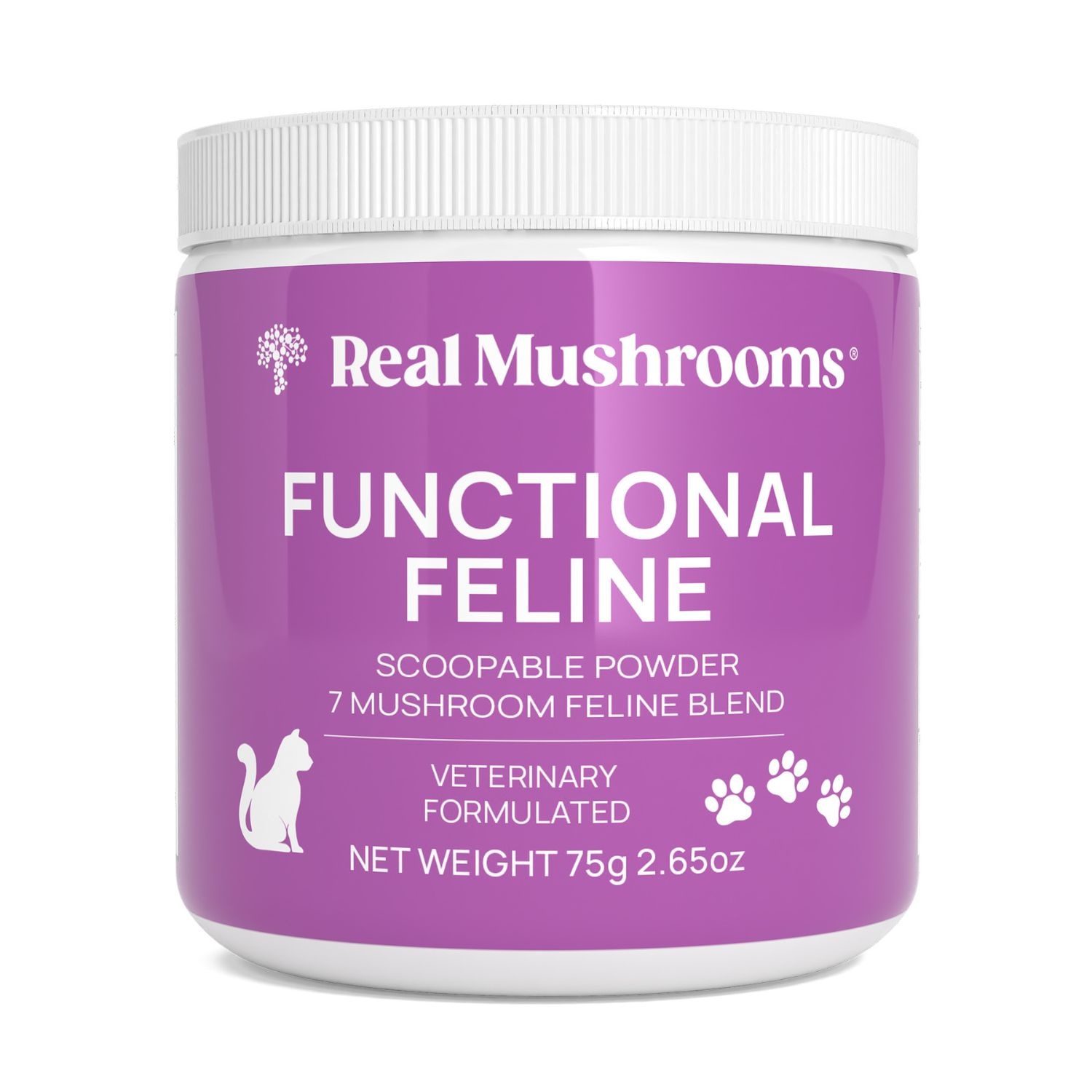Joint Care for Dogs & Cats: Rehabilitation, Nutrition & Mushrooms
16 minute read
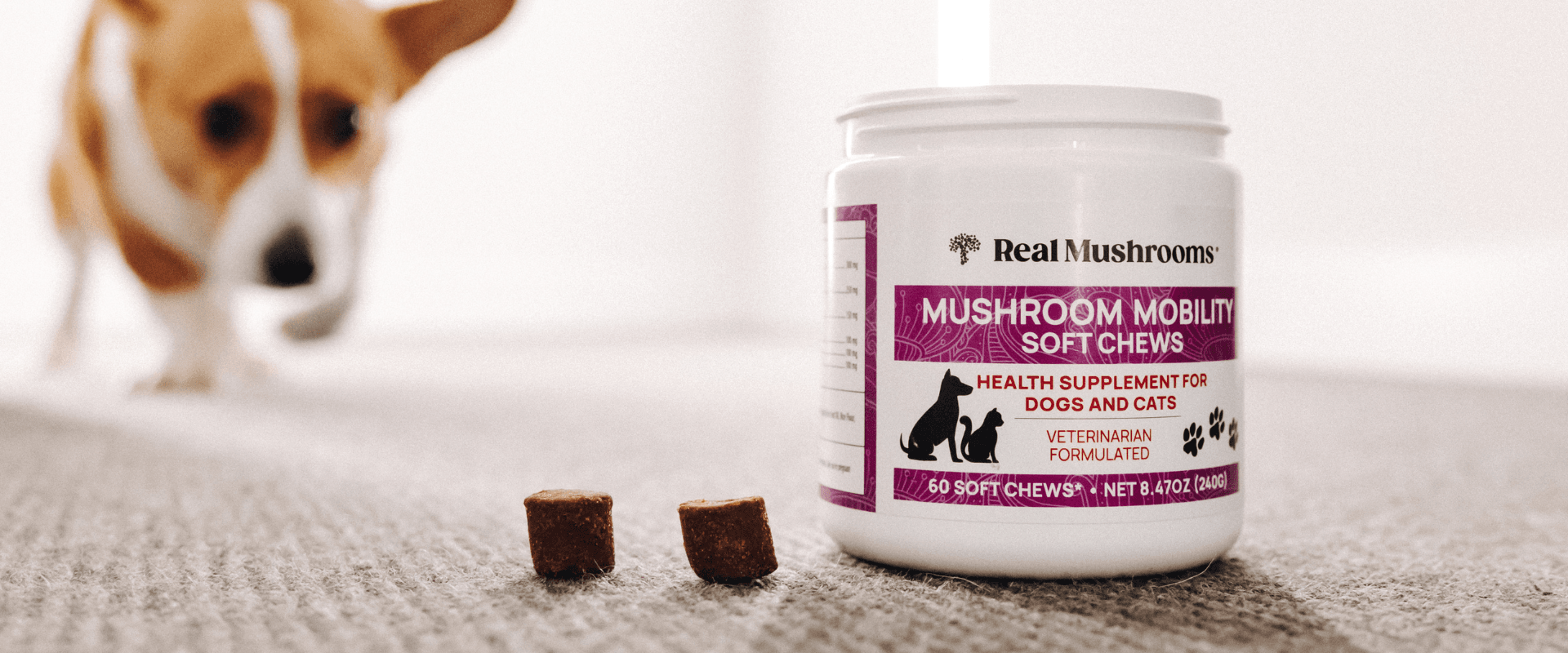
I am very excited that we are launching Real Mushrooms’ new Mobility Chews. I feel there is a tremendous need for products in the pet marketplace that provide effective joint care for dogs and cats. The ideal product supports normal joint flexibility, musculoskeletal function, and overall mobility in dogs and cats. In fact, this kind of product was the most requested type of mushroom supplement when we surveyed pet parents.
I became interested in Canine Rehabilitation therapy and joint care for dogs 20 years ago and got my certification in Canine Rehabilitation (CCRA) in 2007. I managed a canine rehabilitation facility for many years before I moved on to working in the whole food supplement industry in 2011. Canine Rehabilitation is one of the few branches of veterinary medicine where you can see improvement in a case with your own eyes.
Out of all the modalities I was exposed to in hands-on vet practice, canine rehab was where I witnessed the most success stories. Assisting in restoring structure and function to dogs and cats, young and old, was always so rewarding. Additionally, working with aging pets to assist with mobility and quality of life was a true blessing. The gratification from seeing this improvement is helping to drive many DVM’s and technicians to enter this field as a specialty.
Here are some of my takeaways from my wonderful career in rehab and joint care for dogs and why I am so excited that Real Mushrooms now has a dedicated Mobility Chew.
In This Article
- Signs Your Cat or Dog May Need Joint Care
- Mushrooms for Joint Health in Dogs & Cats
- Joint Care Strategies Beyond Supplements
- Proper Nutrition for Joint Health
- Herbs for Joint Pain & Inflammation
Signs Your Cat or Dog May Need Joint Care

Our pets are instinctively wired to hide discomfort, making it essential to recognize subtle signs that may indicate they need additional mobility and joint support. This is because in the wild, showing any sort of weakness is a major detriment. An older, slower, compromised animal would be a target in the wild. This ancestral memory is encoded into the DNA of our pets, and so often they hide discomfort. This is particularly true for cats.
With obvious signs like limping, abnormal gait, or known physical injury, determining the painful area can be relatively easy. Unfortunately, in many cases, the discomfort can be tricky to pinpoint.
Here are some other signs your pet may have joint discomfort:
- Circling multiple times before laying down
- Trouble or unwillingness to jump into the car or on the bed
- Licking an area excessively
- Protective of a part of their body
- Hiding or other out-of-character behaviors
- Uncharacteristic aggression such as growling when an area is touched
Here’s a tip that can help determine where the discomfort may be originating: Feel for heat!
Heat means inflammation is present. Inflammation is the body's response to an injury or chronic musculoskeletal condition and can cause warmth, pain, swelling, and limitation of function. While you should always take your pet to the vet if you have concerns about pain, the following at-home exercise can help.
A simple at-home test for assessing joint pain in pets:
- Sit quietly on the floor with your dog or cat in a relaxed position. Starting at the head, run your hand very slowly and lightly down their back and along their spine. Notice any changes in temperature as you move your hand from head to tail. Is there a particular area that feels a bit (or a lot) warmer?
- Move your hand slowly over the hips, feeling for a temperature change. Don’t forget to also run your hand down the front legs, focusing on the shoulder area. Do the same with the rear legs, focusing on the stifles (knees).
- If you do find an area that is warmer than the rest of the body (or multiple areas) this could be an indication that your dog has some sort of musculoskeletal inflammation.
The following sections will outline research-supported modalities and supplements ideal for providing holistic joint care for dogs and cats.
Mushrooms for Joint Health in Dogs & Cats

One of the most common questions we get at Real Mushrooms has to do with functional mushroom products for pets that can support pain, inflammation, joint issues, and other musculoskeletal challenges. Functional mushrooms can be a great addition to a pain and inflammation protocol. However, it's important to clarify that a well-rounded approach that includes additional support would be most ideal.
I reached out to our Chief Veterinary Officer, Dr. Rob Silver, for some insight into how mushrooms may support musculoskeletal health and which mushrooms are his favorites for this type of support. Doc Rob formulated Real Mushrooms' new Mobility Chews, and I was very curious to hear which mushrooms he chose for this formula and why. Here is what he said:
“Several mushrooms have good evidence in the scientific literature and from their use historically to support a healthy response to inflammation and to address the occasional pain experienced from excessive activity.” - Dr. Rob Silver, DVM
3 Mushrooms for Multifunctional Joint Support

Reishi Mushroom
Reishi, or Ganoderma lucidum, also sometimes referred to as the Mushroom of Immortality, contains both beta glucans and triterpenes that help maintain a healthy inflammatory response and support relaxation in pets experiencing occasional discomfort from activity. These active ingredients in this mushroom have also shown the ability to reduce stress and anxiety, which are commonly associated with an animal’s difficulty in getting around.<1>
Cordyceps Mushroom
The cordyceps mushroom, Cordyceps militaris is valued for its potential to support stamina, endurance, and energy levels in active and aging pets. It may also help maintain a normal inflammatory response to physical exertion. Cordyceps contains beta glucans and triterpenes that are potent anti-inflammatory agents, but cordyceps also contains cordycepin, a very unique active ingredient that helps regulate energy production but can also benefit cardiovascular activity by improving cardiac output by as much as 60% in controlled studies.<2>
Both cordyceps and reishi are called adaptogens, which means they work through the pituitary and adrenal glands to modulate stress and its adverse effects on the body.
Golden Oyster Mushroom
The third mushroom in this formula is the Golden oyster mushroom, Pleurotus citrinopileatus. I've included this mushroom in the Mobility soft chews for its very potent antioxidant and analgesic properties.
Golden oyster is a rich source of ergothioneine, a powerful antioxidant compound that has many benefits, including support for healthy mitochondrial function, which also supports improved energy and activity. It has been found to support a healthy joint range of motion and to lessen chronic pain.<3>
The strong antioxidant properties of ergothioneine can also help protect the cells of the joint’s cartilage from damage by reactive oxidative species as well as from the ravages of inflammation.<4>

Joint Care Strategies Beyond Supplements
As mentioned previously, when addressing musculoskeletal issues, mushrooms should be part of a well-rounded protocol that takes diet and lifestyle into consideration. Synergistic supportive measures can include diet, whole food supplements, and herbs, some of which I will discuss later in this blog.
Longevity and regenerative medicine are the future of the pet health industry!
One of my favorite aspects of working in canine rehabilitation therapy was all the cutting-edge tools that we got to work with. Some of these tools were available to pets before being approved for human use.
Stem cell therapy is a great example of a modality that was being used in veterinary medicine before human medicine. I was blessed to be working in a facility that treated some of the first veterinary stem cell cases in the country and was able to witness the profound effects that this type of modality had on many pets.
Modalities like laser therapy, acupuncture, chiropractic, and underwater treadmills (hydrotherapy) are available at more and more veterinary hospitals and rehab centers.
There are some very exciting new modalities in the pet rehab space, including hyperbaric oxygen therapy, platelet-rich plasma (PRP), stem cell therapy, prolotherapy, and more.
Proper Nutrition for Joint Health
Nutrition and herbal therapies can play a crucial role in supporting positive outcomes in the rehab practice. Every rehab case has a nutritional component. Herbs have the potential to make a significant difference in pets’ lives due to their reach and versatility.
My personal opinion, based on observation and experience, is that diet can be one of the biggest limitations in rehab. Most rehab offices operate as referral practices, seeing patients referred from other DVM’s, surgical, or neurology practices. It is rare that the rehab DVM is also the general practitioner for the patient. For this reason, it is difficult to address diet in these referral patients since the referring DVM would most likely frown on the rehab DVM trying to make changes in feeding. In fact, you might not get any more referrals from that DVM!
This is why it is so important for the pet parent to be knowledgeable about nutrition strategies that can support their rehab patient or even help that pet avoid the structural issues that would bring them to a rehab practice in the first place.
It is my opinion that a raw or home-cooked diet can be beneficial because it will significantly reduce the amount of advanced glycation end product (AGE) producing foods the patient is consuming.
Advanced Glycation End Products (AGE’s) and Inflammation
I propose that the high heating temperature we expose processed pet foods to is wreaking havoc on dogs and cats. Any pet food that goes through the extrusion process is heated at temperatures reaching 400 degrees Fahrenheit, making the food itself inflammatory. Additionally, this high heating temperature creates the Maillard reaction. The Maillard reaction is a series of small, simultaneous chemical reactions that occur when proteins and sugars in food are transformed by heat. This extremely high heating method used when making pet food also reduces the bioavailability of the vitamins, minerals, and amino acids in the food.<5,6>
Even more disturbing than the loss of nutrients due to high heating temperatures is the creation of advanced glycation end products (AGEs) in pet food. AGEs, also known as glycotoxins, are a group of highly oxidant compounds that have been linked to the development of many diseases, including diabetes, kidney disease, metabolic syndrome, and accelerated aging. AGEs create oxidative stress and inflammation. Testing shows that an average daily serving of dog food contains Maillard reaction products at 122 times the safe level for humans and 38 times higher for cats.<7,8,9>
There is also a connection between these AGE’s and osteoarthritis in our pets. A 2004 study showed that older dogs who had CCL surgery had an increased level of osteoarthritis in relation to the amount of AGE's in their system. There is also a connection between AGE's and joint inflammation. More studies connect AGE’s to the degradation of cartilage.<10,11,12>
When rehabbing dogs, especially older dogs on processed foods, there are several things we can do to help mitigate the effects of the inflammatory food and AGE's.
Antioxidant-Rich Foods for Joint Care

In addition to antioxidant-rich mushrooms, below is a list of foods that have been shown to have an antioxidant effect and also down-regulate inflammation. Additionally, a diet rich in antioxidants has been shown to have a beneficial effect on the canine brain, possibly reducing cognitive dysfunction. <13>
- Turmeric: There are an extensive number of studies pointing to the beneficial anti-inflammatory and antioxidant effects of curcumin, the active component of turmeric. In a recent study, turmeric was even been shown to be effective in supporting tendon healing.<14,15>
- Blueberries: Blueberries contain flavonoids, which have known anti-inflammatory and antioxidant effects.<16>
- Grapeseed: There is a potent antioxidant called oligomeric proanthocyandin (OPC) in grapeseed. OPC’s have been shown to also have anticarcinogenic, anti-inflammatory, and antimicrobial effects, and are also beneficial for cognitive function.<17>
- Broccoli/Cruciferous Vegetables: Not only are cruciferous vegetables good for their antioxidant effect, research shows that the sulforaphane in these vegetables destroys cancer cells in dogs. Consider adding this to the diet of a rehab dog with osteosarcoma.<18>
- Beets: Beets are an excellent anti-inflammatory/antioxidant food to add to the canine diet either in fresh or supplement form. They are full of Vitamin C and B, iron, potassium, manganese, and magnesium. Additionally, beet juice has been shown to aid in exercise recovery.<19,20>
Minerals and the Canine Cruciate
Rupture of the canine cranial cruciate ligament is by far the most common issue seen in the veterinary rehabilitation practice. Sometimes, the client comes in to explore conservative management for their pet, and other times, the pet is being seen post-surgery.
Rehabilitation therapy can go a long way in aiding in an effective and efficient recovery.
I believe there is a nutritional component adding to the epidemic of CCL tears in canines. Trace minerals, particularly zinc, and manganese, are vital to building strong connective tissue. These minerals are often deficient in the canine diet. There are anecdotal reports of zinc and manganese repeatedly showing up deficient in the hair analysis of dogs with CCL tears.<21>
Additionally, there is compelling evidence to support the theory that early spay/neuter is contributing to the high level of CCL tears we are seeing in our dogs.
Foods with Joint-Friendly Zinc/Manganese

Manganese would be easy to find in the species-appropriate diet if feeding a whole prey model. It is found in bone, liver, heart, pancreas, testes, hair, feathers, and wool. Most clients don't feed this way, so below are some sources of these important minerals and other cofactors.
- Spices: Ounce per ounce, herbs and spices have the highest manganese content of any food on the planet. Consider using these spices as superfoods: Cloves, ginger, cardamon, saffron.
- Green-Lipped Mussels: GLM's are an excellent source of zinc, manganese, and copper, in addition to essential fatty acids (such as omega-3 fatty acids), vitamins C and E, amino acids glutamine, and methionine. There is evidence that adding green-lipped mussels to the diet can have a positive effect on osteoarthritis as well.<22>
- Wheat Germ: This superfood is packed with B vitamins, zinc, magnesium, and manganese, and is also a rich source of vitamin E.
- Spinach: This should either be given raw or minimally cooked so as not to lose the minerals.
- Oats: These are not only an excellent source of manganese and some zinc; they have antioxidant and anti-inflammatory properties.<23>
Herbs for Joint Care in Dogs & Cats
There are many herbs that can be used in rehabilitation therapy to address pain and inflammation. This is really good news because long-term use of NSAIDs should be avoided. In addition to the known and commonly reported effects NSAIDS have on the liver, they also negatively affect kidney function and have been linked to dementia in humans.<24, 25>
Additionally, some of the newer arthritis drugs like Librela and Solensia (for cats) should be seriously researched before you consider using them. There are some horrific stories about the side effects of these drugs.
Beneficial herbs to use for your pet’s joint pain and inflammation:
Boswellia
Botanical name: Boswellia Serrata
Part Used: Resin
Main Actions: Anti-inflammatory, anti-arthritic, anti-tumor, analgesic, antibacterial
Main Veterinary Indications: Osteoarthritis, ulcerative colitis, adjunct therapy in cancer tx
Key Constituents: Pentacyclic triterpine acids (boswellic acids), essential oil, terpenols, uronic acids, and sterols
There are a number of clinical studies showing the effectiveness of Boswellia on osteoarthritis. It might very well be disease-modifying when used for this purpose. It has been shown to increase pain threshold and tolerance in humans. Another interesting clinical study showed that, although Boswellia had a slower onset of pain control than an NSAID, the long-term effects were better. Patients felt pain relief a month after discontinuing Boswellia as opposed to the pain immediately returning upon discontinuation of the NSAID. This points to the potential disease-modifying effect of Boswellia. Canine studies using Boswellia showed improvement in 71% of the dogs with degenerative orthopedic conditions. Boswellia is most effective when used with fat or oil.<26, 27, 28>
California Poppy
Botanical Name: Eschscholtzia Californica
Part Used: Aerial parts
Main Actions: Antxiolytic, mild sedative, analgesic, hypnotic
Main Veterinary Indications: Neuralgia, sciatica, trigeminal neuralgia, anxiety, emotional stress, insomnia
Key Constituents: Isoquinoline alkaloids, including californidine and eschscholtzine, propitine alkaloids
California Poppy is an excellent herb to consider when dealing with any kind of nerve pain or neuralgia, especially if there is anxiety or stress involved. It also has a mild sedative effect.<29>
Corydalis
Botanical Name: Corydalis Ambigua
Part Used: Tuber
Main Actions: Mild sedative, hypnotic, analgesic, spasmolytic
Main Veterinary Indications: Pain management, especially visceral pain, IBS, insomnia, anxiety, and epilepsy.
Key Constituents: Alkaloids including tetrahydropaltamine
Corydalis is another excellent herb to consider with any neuralgia or neuropathic hypersensitivity. The herb works with the dopamine receptors to down-regulate inflammation and neuropathic pain.<30>
Turmeric
Botanical Name: Curcuma Longa
Part Used: Rhizome
Main Actions: Anti-inflammatory, antioxidant, anti-arthritic, cholorectic
Main Veterinary Indications: Arthritis, adjunct cancer tx, phase 1 and 2 liver detoxification
Key Constituents: Essential oil, curcuminoids
Turmeric is an incredibly valuable medicinal food because it has such a wide range of beneficial effects. It is an antioxidant, anti-inflammatory, and also very effective for pain management. Turmeric contains a compound called Curcumin. This is the active ingredient that provides the most health benefits. When using turmeric to address pain or other specific conditions, it is often best to use curcumin instead of whole turmeric root to get more of this active ingredient.
A randomized, double-blind, placebo-controlled study on the treatment of dogs with osteoarthritis showed beneficial effects when using curcumin.<31>
Conclusion: Empowering Dog & Cat Owners for Better Joint Health
Rehabilitation therapy is an area where we can make such a difference in patients' lives. Pain control is crucial not only to accelerate healing but also for ethical reasons. Natural herbal pain treatments are effective and, in some cases, restorative, plus they don't have the long-term negative effects that NSAIDS do. Good nutrition is a key consideration in positive rehabilitation outcomes, and adding fresh foods or using whole-food supplementation can achieve this.
The monographs in this paper were referenced from Kerry Bone, ”The Ultimate Herbal Compendium – The desktop guide for herbal prescribers” First edition July 2007, Phytotherapy Press.
The dosages and veterinary indications in this paper were referenced from: Fougere B, Wynn SG. Nov. 29 2006 Veterinary Herbal Medicine 1 edition. Elsevier Canada 736

Related Articles:
- How is the Quality and Integrity of Animal Supplements Regulated?
- Tincture or Powder: Which Mushroom Supplement is Best for Your Pet?
- Mushrooms for Whole-Family Health: A Supplement Primer for Pet Parents
References
- Sheena, N., Ajith, T.A., Janardhanan, K.K. Anti-inflammatory and anti-nociceptive activities of Ganoderma lucidum Occurring in South India. Pharmaceutical Biology 41:4, 301-304. https://www.tandfonline.com/doi/abs/10.1076/phbi.41.4.301.15677
- Radhhi, M., et al. A Systematic Review of the Biological Effects of Cordycepin. (2021), 26, 5886.https://www.mdpi.com/1420-3049/26/19/5886
- Benson, K.F., Ager, D.M., Landes, B., Aruoma, O.I. Jensen, G.S. Improvement of joint range of motion (ROM) and reduction of chronic pain after consumption of ergothioneine-containing nutritional supplement. Preventative Medicine 54 (2012) S83-S89. https://www.sciencedirect.com/science/article/abs/pii/S0091743512000448
- Sakata, S., Kunimatsu, R., Tanimoto, K. Protective Effect of Ergothioneine against Oxidative Stress-Induced Chondrocyte Death. 2024, 13, 800. https://www.mdpi.com/2076-3921/13/7/800
- Van Rooijen C1, Bosch G, van der Poel AF, et al. 2013, Aug 6. The Maillard reaction and pet food processing: effects on nutritive value and pet health. https://www.ncbi.nlm.nih.gov/pubmed/23916186.
- Rokey GJ, Baldwin D. 2013, Sep 10. Extrusion temperature: A critical control point in pet food processing. http://www.allaboutfeed.net/Equipment/Articles/2013/9/Extrusion-temperature-A-critical-control-point-in-pet-food-processing-1359454W/.
- Uribarri J, Woodruff S, Goodman S, et al. 2010, Jun 11. Advanced Glycation End Products in Foods and a Practical Guide to Their Reduction in the Diet. https://www.ncbi.nlm.nih.gov/pmc/articles/PMC3704564/.
- Abate G1, Delbarba A2, Marziano M1, et al. 2015, Nov 16. Advanced Glycation End Products (Ages) in Food: Focusing on Mediterranean Pasta. https://www.longdom.org/open-access-pdfs/advanced-glycation-end-products-ages-in-food-focusing-on-mediterranean-pasta-2155-9600-1000440.pdf.
- Van Rooijen C1, Bosch G, Van Der Poel AF, et al. 2014, Aug 20. Quantitation of Maillard reaction products in commercially available pet foods. https://www.ncbi.nlm.nih.gov/pubmed/25088431.
- DeGroot J1, Verzijl N, Wenting-Van Wijk MJ, et al. 2004, Apr 5. Accumulation of advanced glycation end products as a molecular mechanism for aging as a risk factor in osteoarthritis. https://www.ncbi.nlm.nih.gov/pubmed/15077303.
- Sunahori K1, Yamamura M, Yamana J, et al. 2006, Jan 5. Increased expression of receptor for advanced glycation end products by synovial tissue macrophages in rheumatoid arthritis. https://www.ncbi.nlm.nih.gov/pubmed/16385501.
- Yang HY1, Chuang SY2, Fang WH3, et al. 2015, Sep 25. Effect of RAGE polymorphisms on susceptibility to and severity of osteoarthritis in a Han Chinese population: a case-control study. https://www.ncbi.nlm.nih.gov/pubmed/26436377.
- Cotman CW1, Head E, Muggenburg BA, et al. 2002, Sep 23. Brain aging in the canine: a diet enriched in antioxidants reduces cognitive dysfunction. https://www.ncbi.nlm.nih.gov/pubmed/12392784.
- Chattopadhyay I, Biswas K, Bandyopadhyay U and Banerjee R.K. Turmeric and curcumin: Biological actions and medicinal applications (PDF File). Available at: http://repository.ias.ac.in/5196/1/306.pdf Current Science, VOL. 87, NO. 1, 10 July 2004.
- Jiang D1, Gao P2, Lin H1, et al. 2015, Nov 5. Curcumin improves tendon healing in rats: a histological, biochemical, and functional evaluation. https://www.ncbi.nlm.nih.gov/pubmed/26540017.
- Ebenezer PJ, Wilson CB, Wilson LD, Nair AR, et al. 2016, Sep 7. The Anti-Inflammatory Effects of Blueberries in an Animal Model of Post-Traumatic Stress Disorder (PTSD). http://journals.plos.org/plosone/article?id=10.1371/journal.pone.0160923.
- Alternative Medicine Review website. Oligomeric Proanthocyanidins (OPCs) (PDF File). http://www.altmedrev.com/publications/8/4/442.pdf VOL. 8, NO. 4, 2003.
- Rizzo VL, Levine CB, Wakshlag JJ. 2016, Mar. The effects of sulforaphane on canine osteosarcoma proliferation and invasion. http://onlinelibrary.wiley.com/doi/10.1111/vco.12212/full.
- Clifford T1, Bell O2, West DJ2, Howatson G2, et al. 2015, Nov 4. The effects of beetroot juice supplementation on indices of muscle damage following eccentric exercise. Available at: https://www.ncbi.nlm.nih.gov/pubmed/26537365.
- Saani M1, Lawrence R1, Lawrence K2. 2017, May 11. Evaluation of pigments from methanolic extract of Tagetes erecta and Beta vulgaris as antioxidant and antibacterial agent. https://www.ncbi.nlm.nih.gov/pubmed/28494614.
- Wang Z1, Li XD, Li MQ, et al. 2008, Jun 31. Changes in basic metabolic elements associated with the degeneration and ossification of ligamenta flava. https://www.ncbi.nlm.nih.gov/pubmed/18795477.
- Pascale Rialland,1 Sylvain Bichot,1 Bertrand Lussier, et al. 2013, Jan. Effect of a diet enriched with green-lipped mussel on pain behavior and functioning in dogs with clinical osteoarthritis. https://www.ncbi.nlm.nih.gov/pmc/articles/PMC3525174/.
- Ren Y1, Yang X, Niu X, et al. 2011, Jan 12. Chemical characterization of the avenanthramide-rich extract from oat and its effect on D-galactose-induced oxidative stress in mice. https://www.ncbi.nlm.nih.gov/pubmed/%2021141964.
- Dublin S1,2, Walker RL1, Gray SL3, et al. 2017. Use of Analgesics (Opioids and Nonsteroidal Anti-Inflammatory Drugs) and Dementia-Related Neuropathology in a Community-Based Autopsy Cohort. https://www.ncbi.nlm.nih.gov/pubmed/28453469.
- Lomas AL1, Grauer GF. 2015, May 5. The renal effects of NSAIDs in dogs. https://www.ncbi.nlm.nih.gov/pubmed/25955147.
- S Sontakke1, V Thawani1, S Pimpalkhute1, et al. 2006, May 2. Open, randomized, controlled clinical trial of Boswellia serrata extract as compared to valdecoxib in osteoarthritis of knee. http://www.ijp-online.com/article.asp?issn=0253-7613;year=2007;volume=39;issue=1;spage=27;epage=29;aulast=Sontakke.
- Prabhavathi K1, Chandra US1, Soanker R, et al. Indian J Pharmacol. 2014 Sep‐Oct; 46(5): 475‐9.
- Reichling J1, Schmökel H, Fitzi J, et al. 2004, Feb 14. Dietary support with Boswellia resin in canine inflammatory joint and spinal disease. https://www.ncbi.nlm.nih.gov/pubmed/14994484.
- Fedurco M, Gregorová J, Šebrlová K, Modulatory Effects of Eschscholzia californica Alkaloids on Recombinant GABAA Receptors. Biochem Res Int. 2015;2015:617620.
- Zhou HH1, Wu DL, Gao LY, et al. 2016, May 4. L-Tetrahydropalmatine alleviates mechanical hyperalgesia in models of chronic inflammatory and neuropathic pain in mice. https://www.ncbi.nlm.nih.gov/pubmed/26981712.
- Innes JF1, Fuller CJ, Grover ER, et al. 2003, Apr 12. Randomized, double-blind, placebo-controlled parallel group study of P54FP for the treatment of dogs with osteoarthritis. https://www.ncbi.nlm.nih.gov/pubmed/12723628.
